Critical Care Unit Rehabilitation Programme
Information for patients from East Kent Critical Care
This booklet will guide your rehabilitation following your stay on the Critical Care Unit.
Due to a long period of inactivity whilst you were ill, your muscles have lost their strength. Do not be surprised if you feel weak and tired to begin with. Even the simplest of tasks may feel difficult, which is where this booklet can help you.
You will have made a significant amount of progress with your physiotherapist, before you left hospital. This booklet will explain how you can help yourself between leaving hospital and starting rehabilitation classes.
What are the benefits of exercising after leaving Critical Care?
Exercising following critical care treatment will:
improve your quality of life; and
help your physical and emotional well-being.
Some of the benefits of exercise following critical illness include:
increased muscle strength and joint movement
improved stability and balance
improved exercise tolerance and fitness
improved circulation
improved well-being; and
increased functional ability.
Following critical illness, physiotherapy can feel very demanding. By doing regular exercise as early as possible, you are more likely to achieve your goals. This may feel like a long process, but it is important that you discuss these goals with your physiotherapist. This will allow you to get the most out of your rehabilitation.
Breathing exercises
Your time on Critical Care will have affected your respiratory (breathing) muscles. This will make it difficult for you to clear chest secretions (such as phlegm).
The Active Cycle of Breathing Technique (ACBT) is a simple pattern of breathing. It can be used to help clear secretions and improve your breathing.
You can do these exercises as many times as you want during the day. There is no limit.
ACBT is a combination of several breathing exercises. You can inter-change these exercises, depending on what feels most helpful for you.
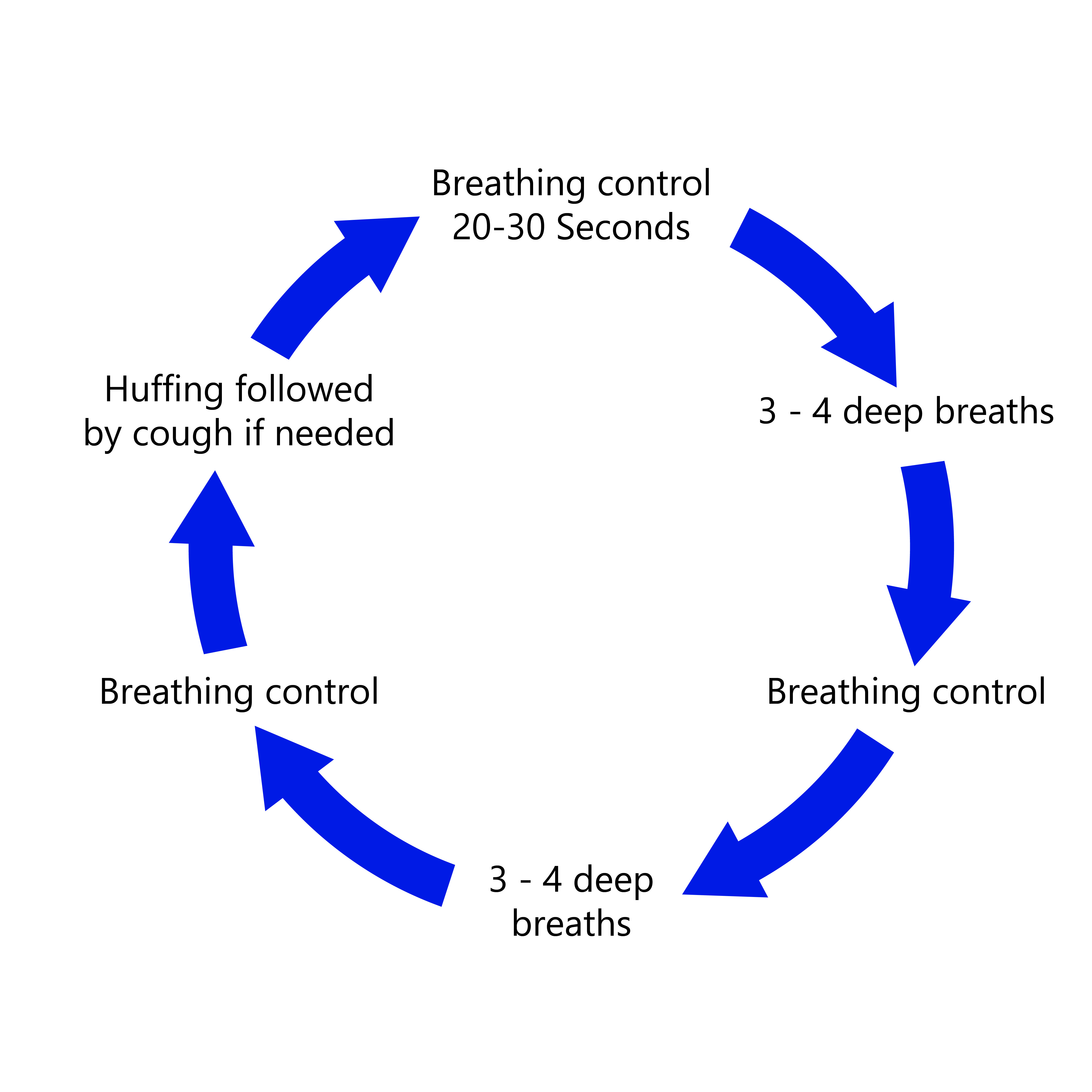
Breathing control
Begin the circuit with normal calm breathing. Relax your shoulders and upper chest.
Deep breathing
You can now move on to taking deeper breaths, which are slower than your relaxed breathing.
When breathing in, try and hold your breath for 3 seconds before breathing out. Take these deep breaths three to four times.
Huffing
Following on from your deep breathing, take a normal breath in and quickly force a breath out (keep your mouth open).
It is useful to imagine that you are steaming up a glass in front of you.
This will help to move secretions along your airways, making it easier to cough them up.
Coughing
It should now be easier to cough up any secretions you have.
Do not cough unless you can feel that the secretions are ready to be cleared.
Continue with this cycle of exercises until you feel your lungs are clear. Return to breathing control and deep breathing after each cough.
How can I exercise safely? When should I stop?
To keep yourself safe whilst exercising, it is important to consider the following.
Do not exercise if you feel unwell.
Do not exercise where it is too hot or too cold.
Do not exercise straight after a large meal. Wait for an hour before exercise.
Always wear comfortable clothing and sensible footwear.
Make sure you have enough space to do your exercises safely.
Stop exercising if:
you have any chest pain or tightness
you feel dizzy; or
you become very breathless.
After your first few exercise sessions, it is normal to have some muscle soreness. This should get better within a few days. However, if your joint or muscle pain continues, contact your GP.
Exercise programme
Your physiotherapist will go through the following exercises with you before you leave hospital. Please use this time to ask any questions or discuss any concerns you may have.
Bed exercises
Bridging
Lie on your back. Squeeze your bottom and push through your feet to lift your bottom off the floor.
Your shoulders should remain in contact with the floor at all times.
Hold for 5 seconds. Slowly lower back to the floor.
Repeat ____ times.
Complete ___ times per day.
-
.jpg) Bridging exercise (1)
Bridging exercise (1) -
.jpg) Bridging exercise (2)
Bridging exercise (2)
Clam
Lie on your side with your knees bent.
Tighten your buttocks. Lift your top knee as far as you can, without letting your pelvis rotate forward or back.
Hold for 5 seconds before lowering your knee back.
Repeat ___ times.
Complete ___ times per day.
-
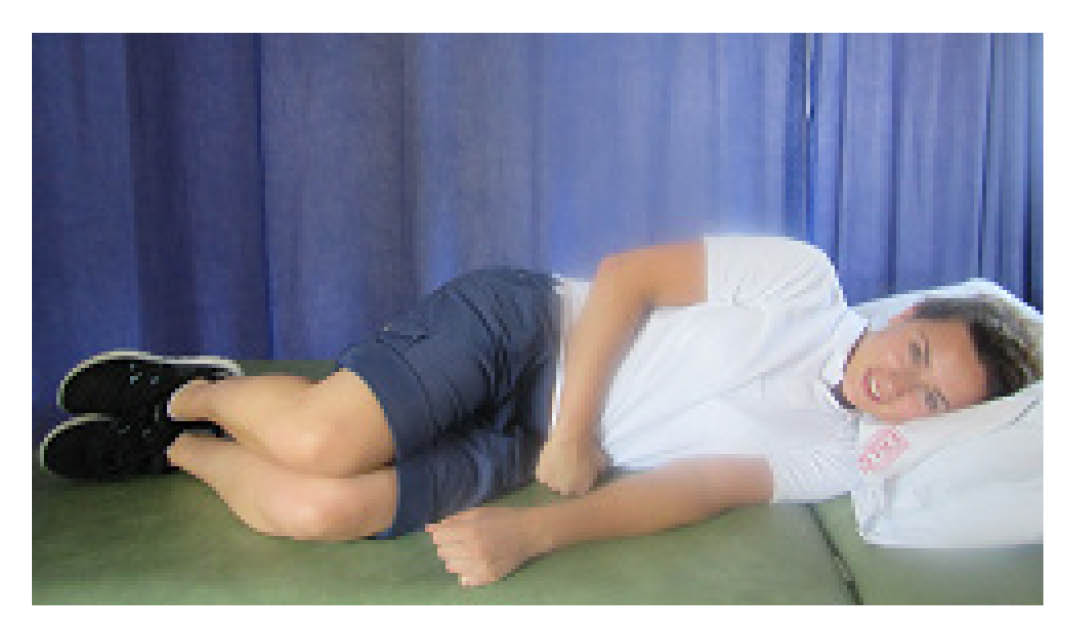 Clam exercise (1)
Clam exercise (1) -
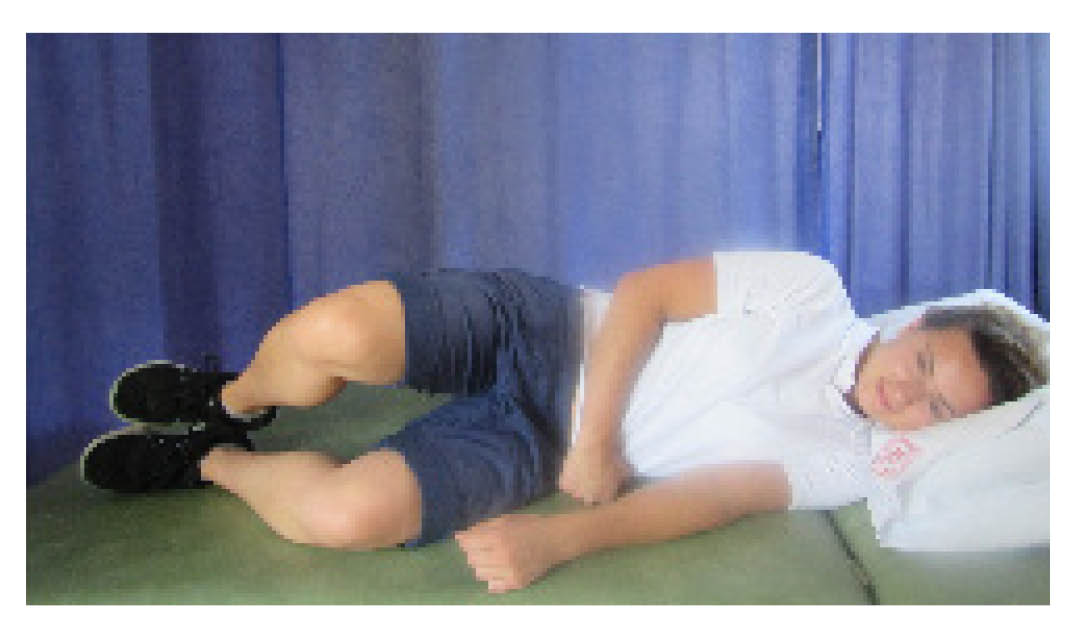 Clam exercise (2)
Clam exercise (2)
Knee rolls
Lie on your back with your knees together and bent.
Slowly roll your knees from side to side keeping your upper trunk still.
Repeat ___ times.
Complete ___ times per day.
-
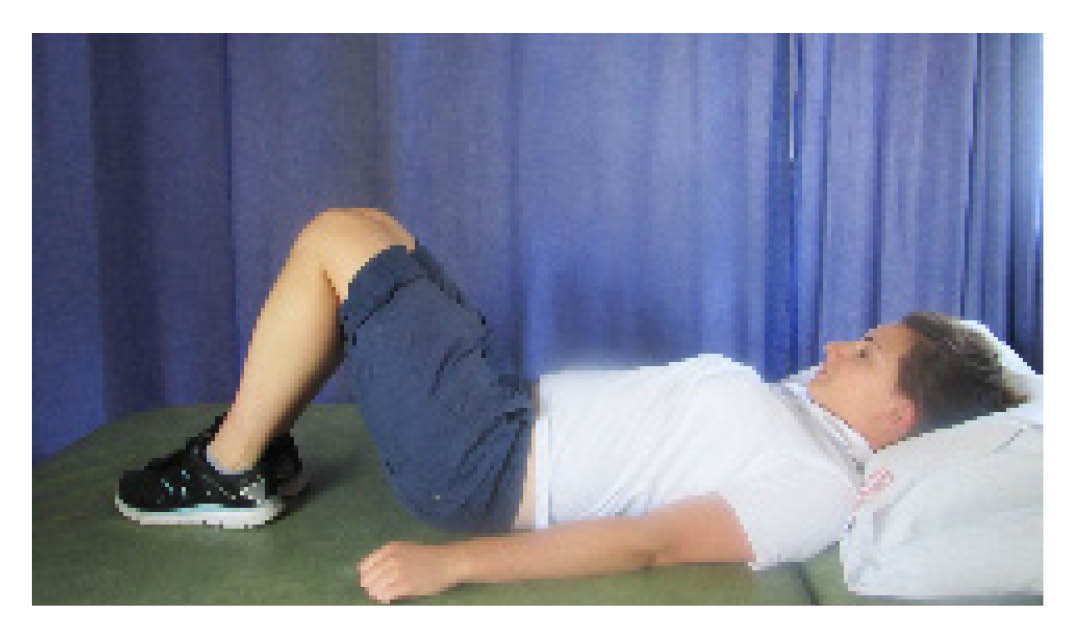 Knee rolls exercise (1)
Knee rolls exercise (1) -
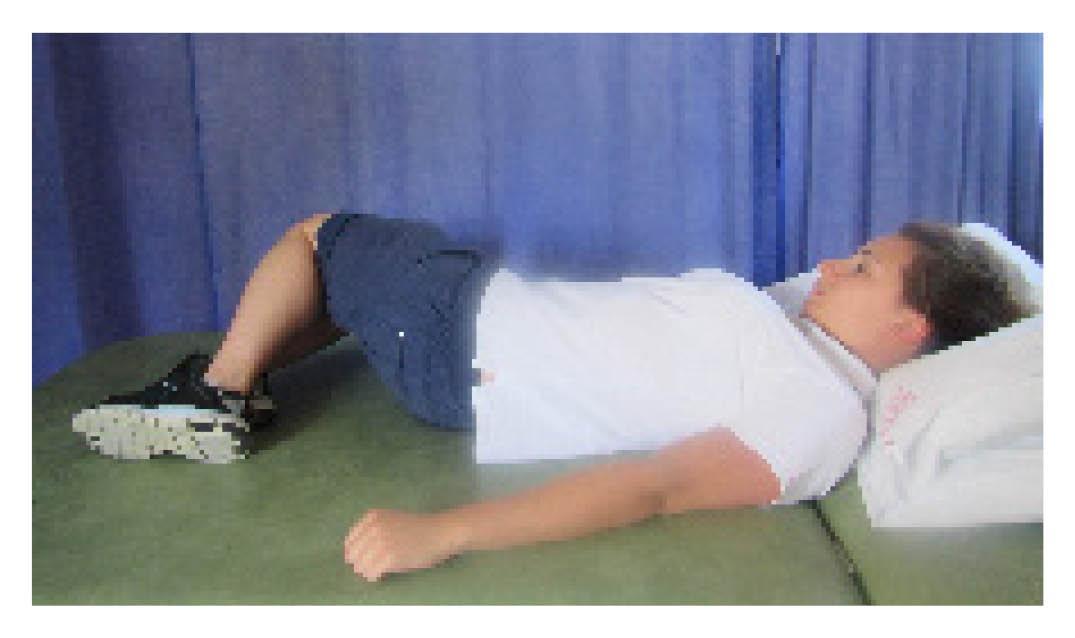 Knee rolls exercise (2)
Knee rolls exercise (2)
Straight leg raise
Lie on your back, with your legs straight and toes pulled up towards the ceiling.
Slowly raise one leg off the bed, keeping your leg straight. Hold for 3 seconds and slowly lower.
Repeat ___ times on both legs.
Complete ___ times per day.
-
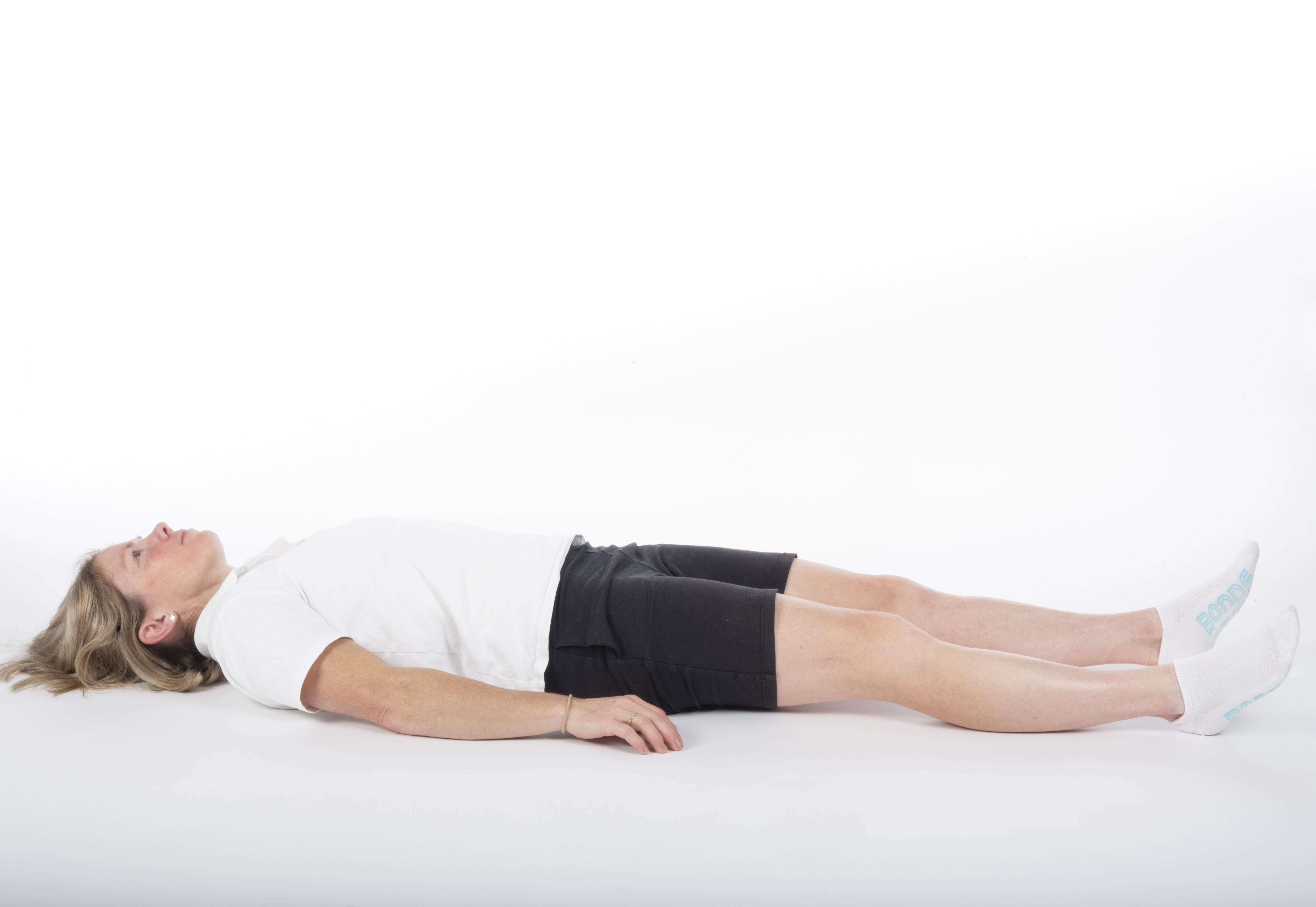 Straight leg raise exercise while lying down (1)
Straight leg raise exercise while lying down (1) -
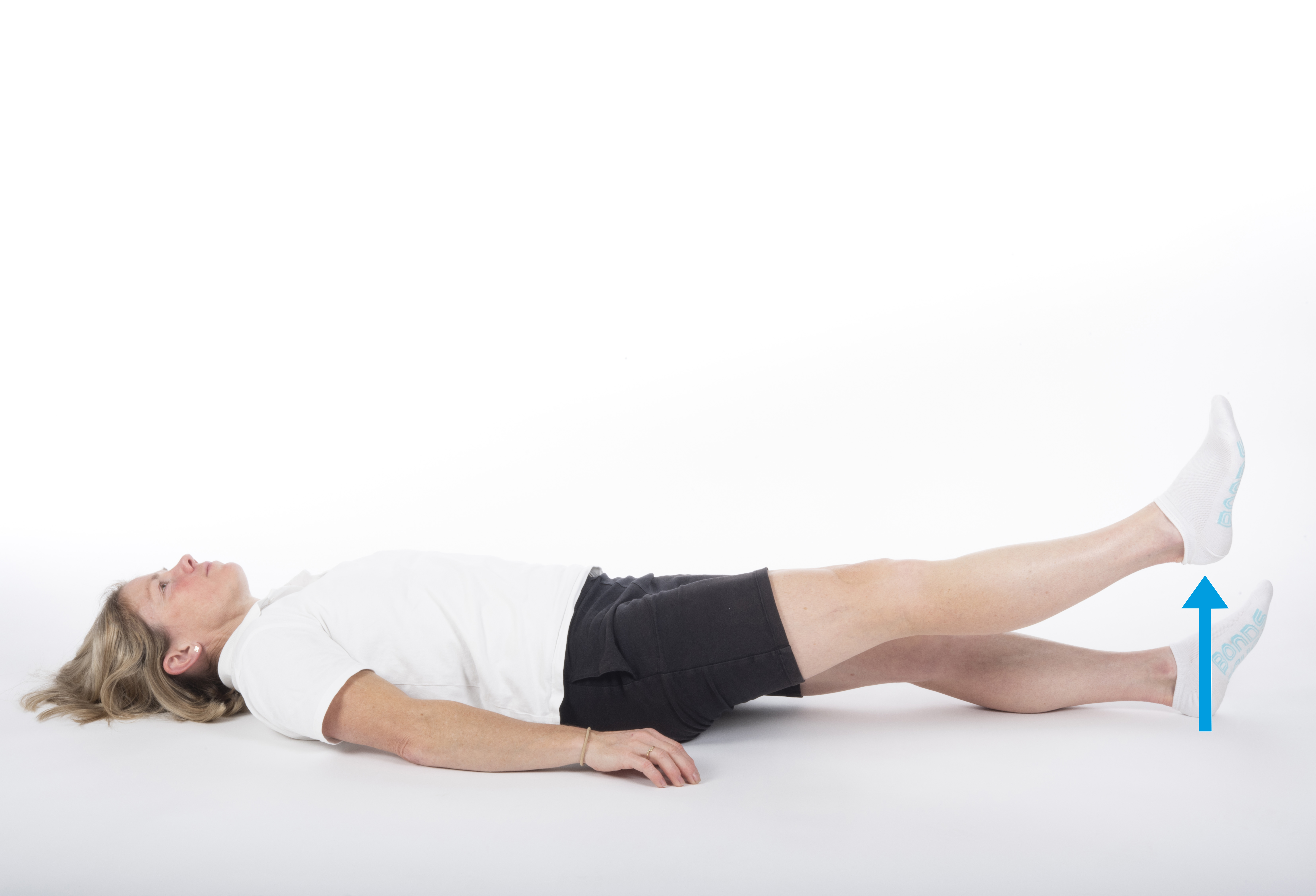 Straight leg raise exercise while lying down (2)
Straight leg raise exercise while lying down (2)
Knee bends
Lie on your back with your legs straight.
Slowly bend one knee, sliding your foot up the bed towards you.
Slowly straighten your knee, and return to the start position.
Repeat ___ times on both legs.
Complete ___ times per day.
-
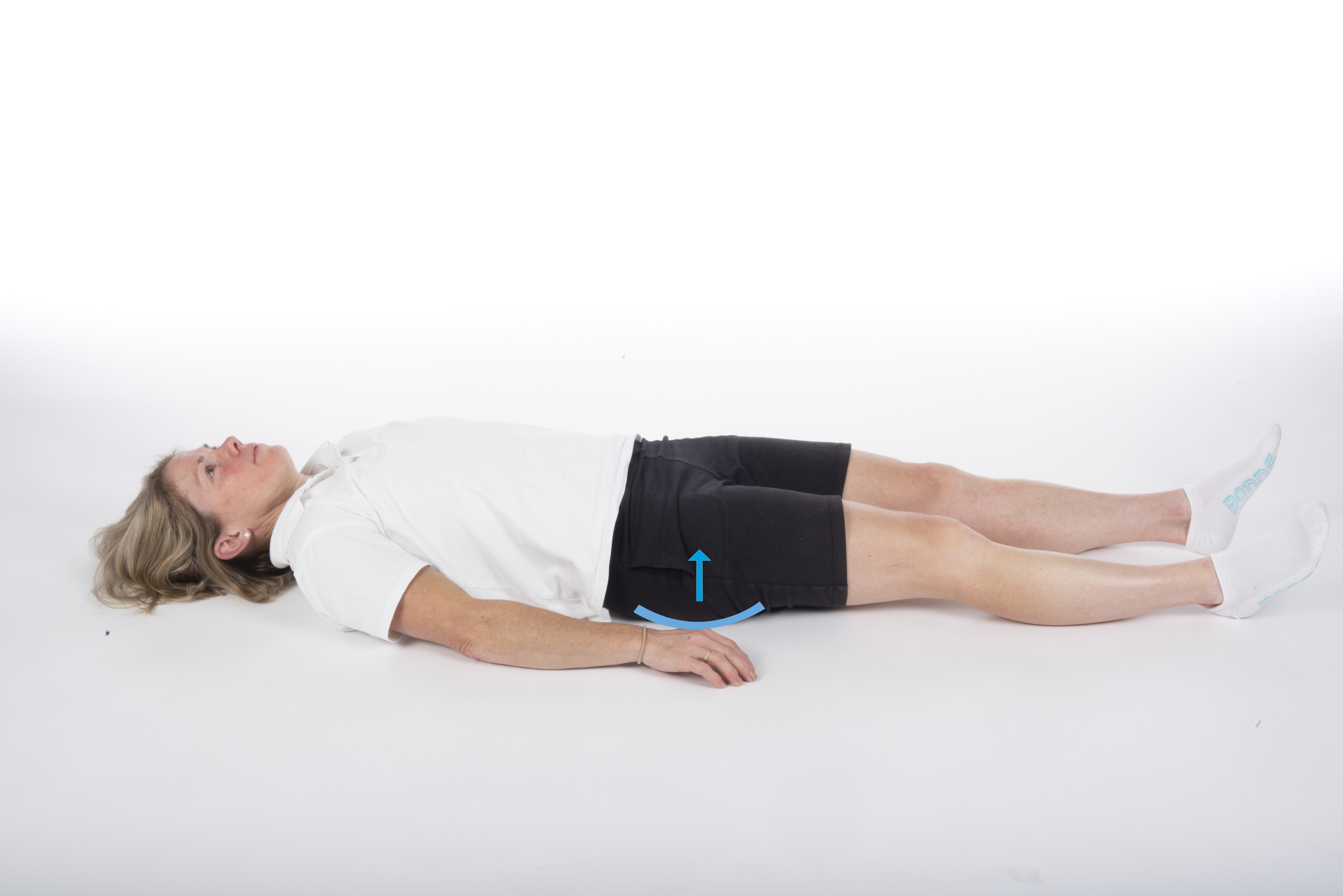 Knee bends exercise (1)
Knee bends exercise (1) -
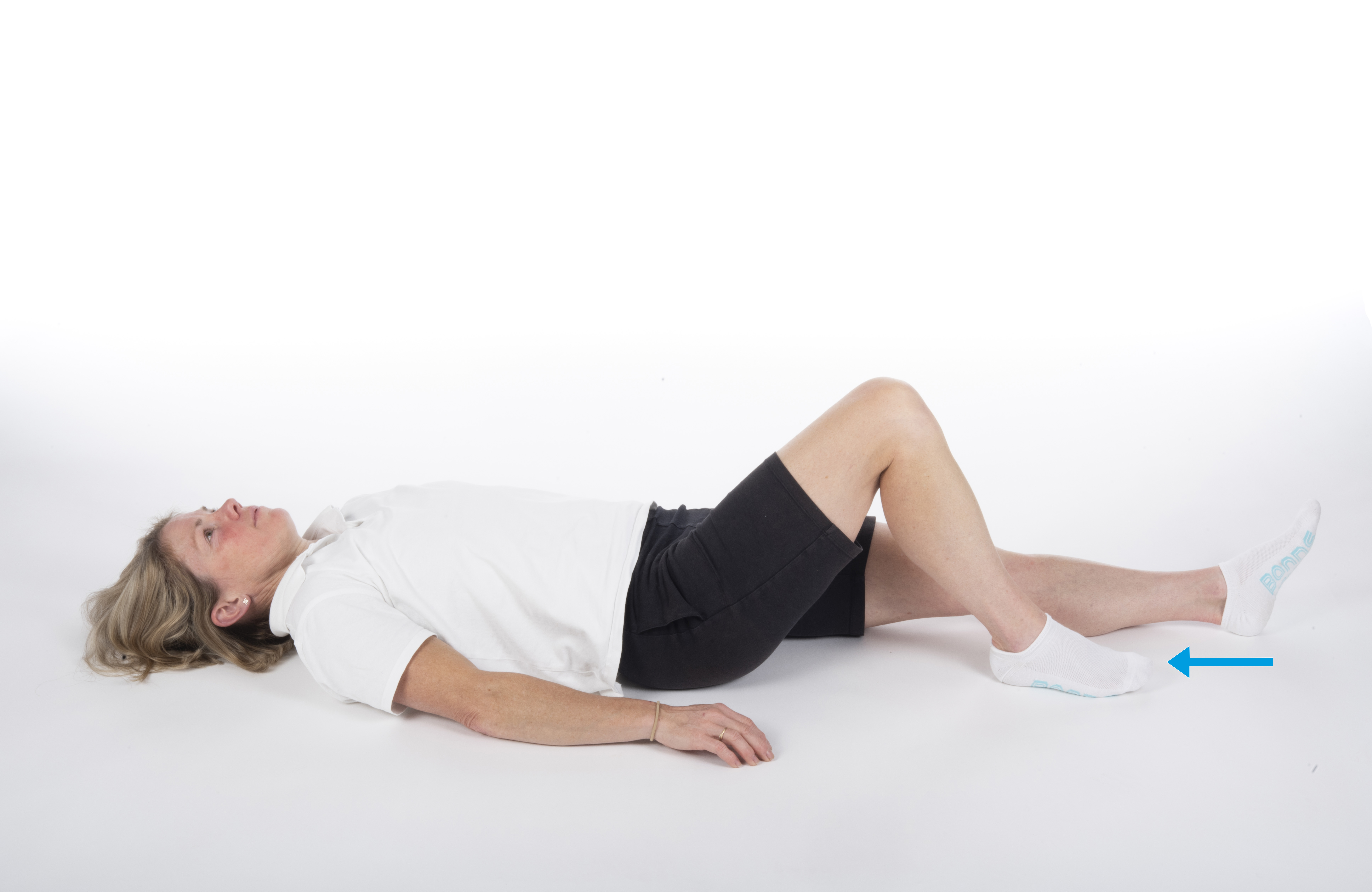 Knee bends exercise (2)
Knee bends exercise (2)
Hip abduction
Lie on your back with your legs straight.
Slowly take your leg out to the side, keeping it straight.
Slowly bring your leg back towards the middle of the bed.
Repeat ___ times on both legs.
Complete ___ times per day.
-
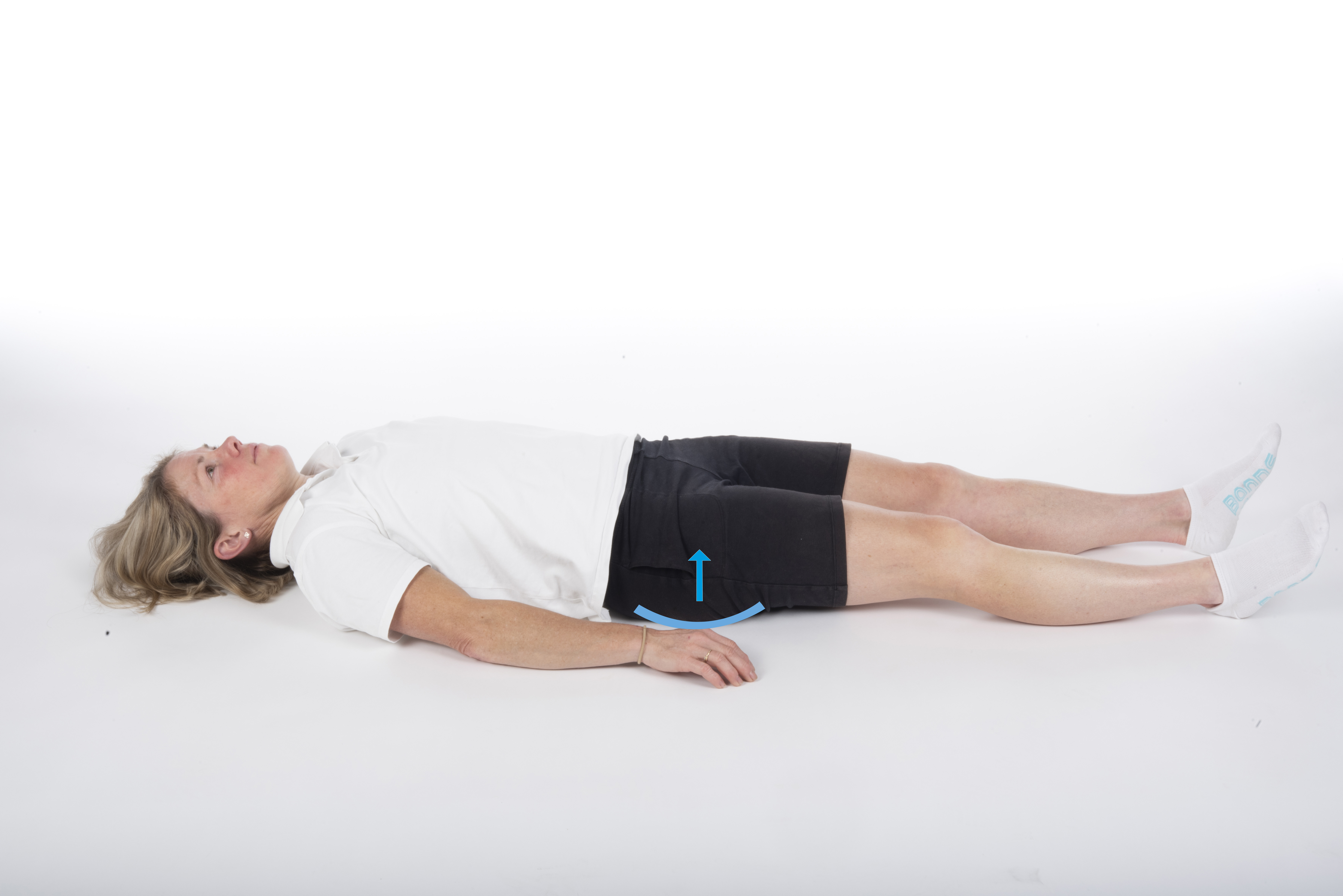 Hip abduction exercise while lying down (1)
Hip abduction exercise while lying down (1) -
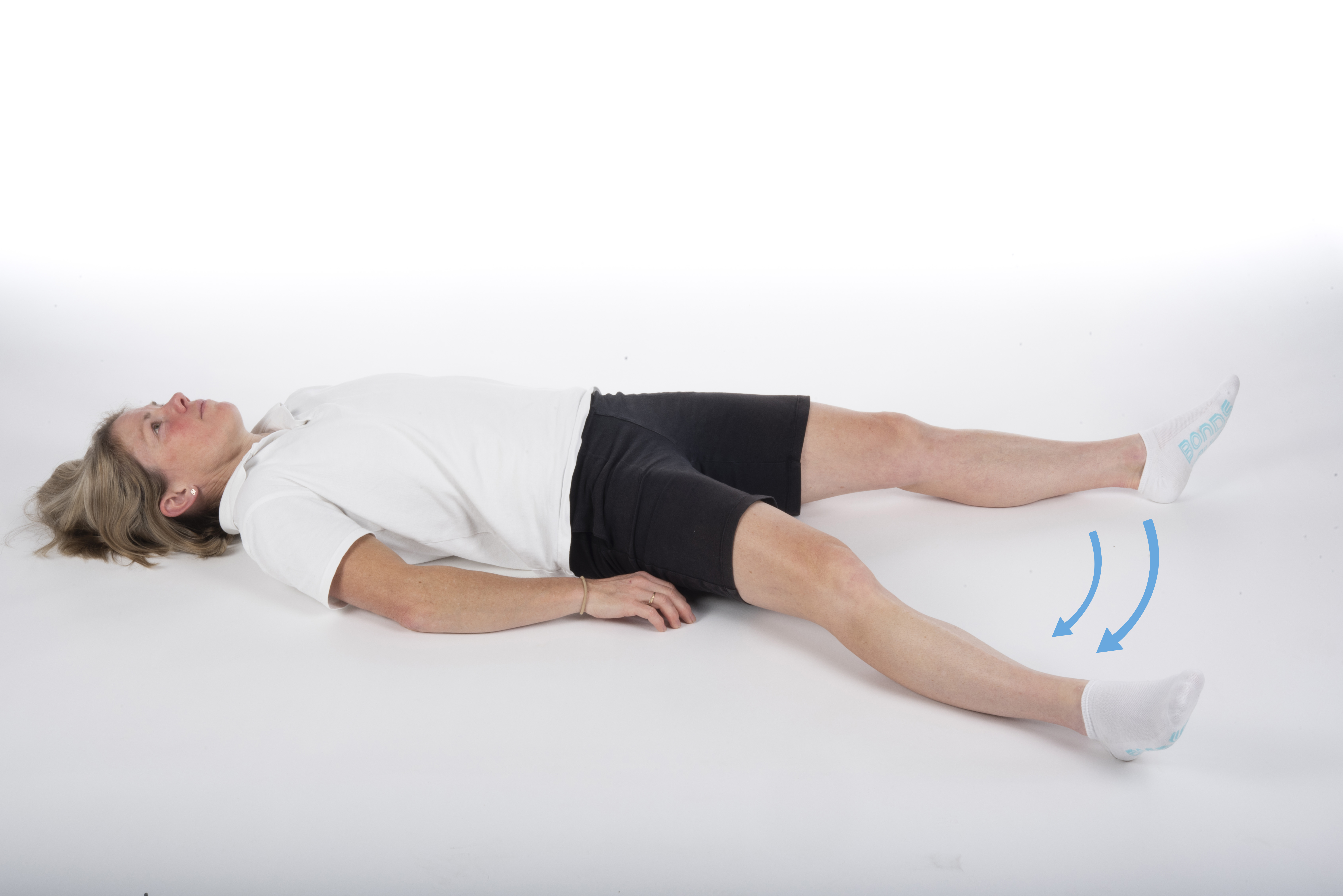 Hip abduction exercise while lying down (2)
Hip abduction exercise while lying down (2)
Knee extension
Lie on your back, with a pillow under the knee to be exercised.
Keep the back of your knee on the pillow. Straighten your knee and lift your lower leg off the bed.
Hold for 5 seconds.
Repeat ___ times on both legs.
Complete ___ times per day.
-
.jpg) Knee extension exercise (1)
Knee extension exercise (1) -
.jpg) Knee extension exercise (2)
Knee extension exercise (2)
Seated exercises
Choose a chair where you can sit comfortably, with your back up against the back of the chair and your feet flat on the floor. If possible, choose a chair which has arms that you can use for support.
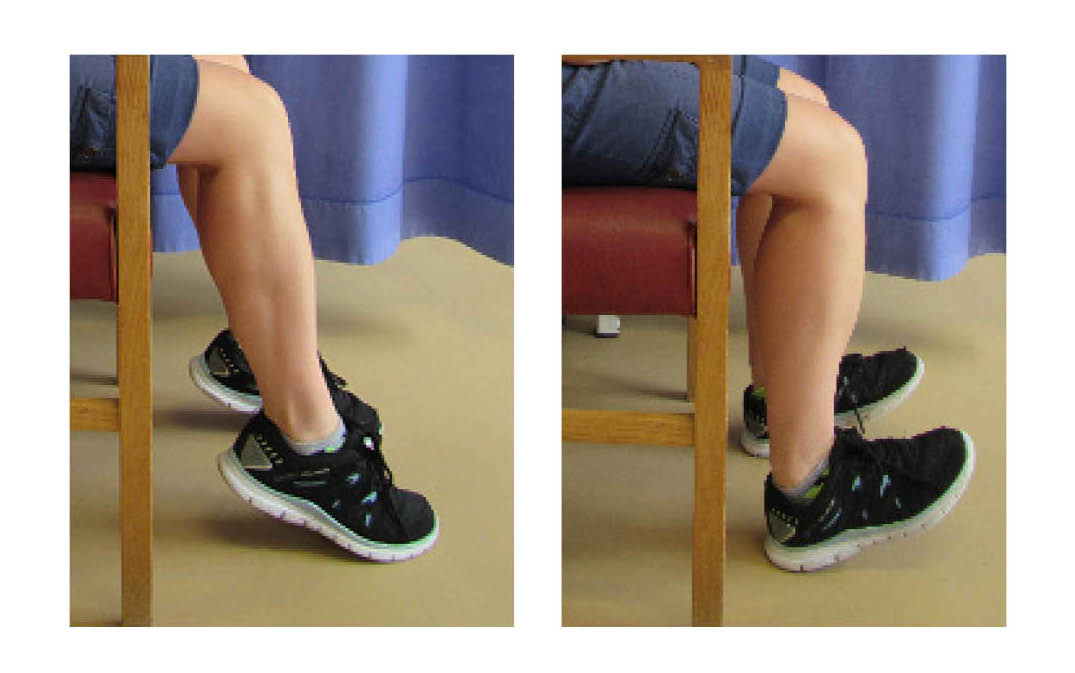
Ankle pumps
Slowly raise your heels off the floor.
Lower your heels to touch the floor and lift your toes up.
Repeat ___ times.
Complete ___ times per day.
Straight leg raise
Sit in a chair.
Pull your toes up. Tighten your thigh muscle, and lift your lower leg straightening your knee. Hold for 5 seconds.
Slowly relax and lower your leg back to the starting position.
Repeat ___ times with both legs.
Complete ___ times per day.
-
-1744204100.jpg) Straight leg raise exercise while sitting (1)
Straight leg raise exercise while sitting (1) -
-1744204103.jpg) Straight leg raise exercise while sitting (2)
Straight leg raise exercise while sitting (2)
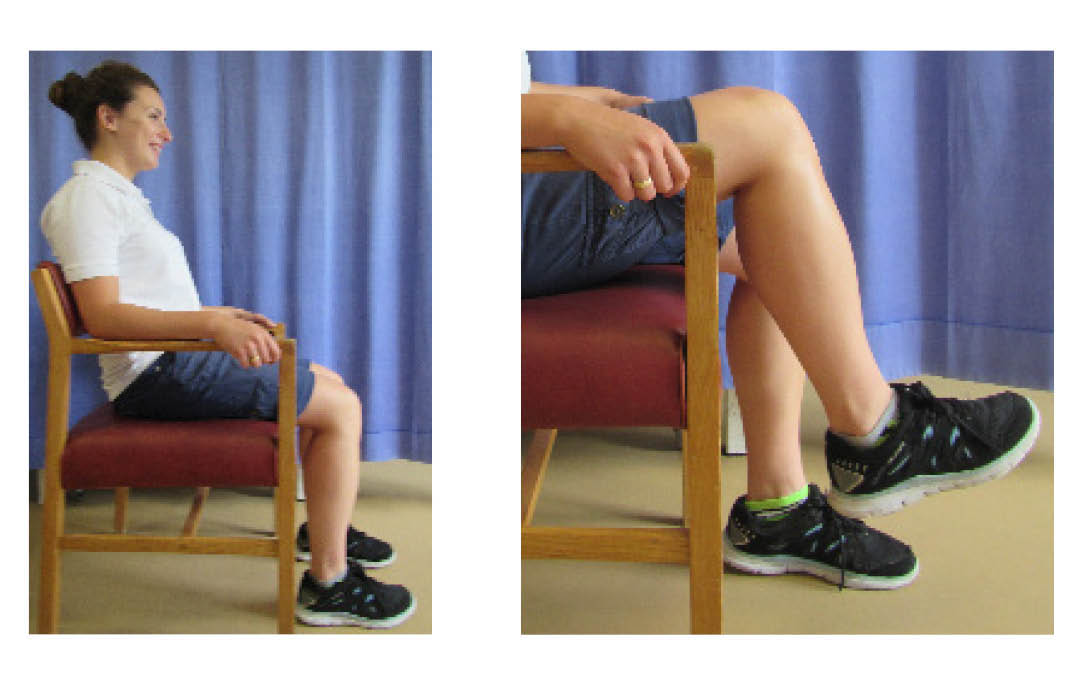
Hip flexion
Sit in a chair.
Lift your leg up off the seat, keeping your knee bent. Hold for 5 seconds.
Slowly return to the starting position.
Repeat ___ times with both legs.
Complete ___ times per day.
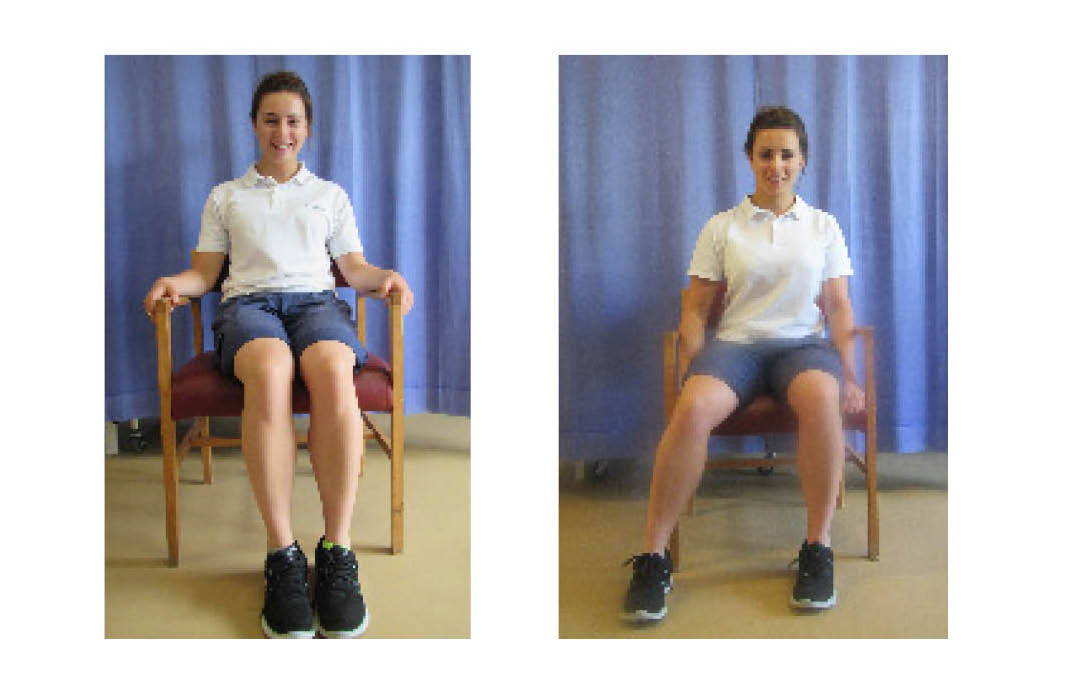
Hip abduction
Sit in a chair.
Lift one leg and bring it out to the side, placing your foot on the floor.
Lift it again and bring it back to the starting position.
Repeat ___ times with both legs.
Complete ___ times per day.
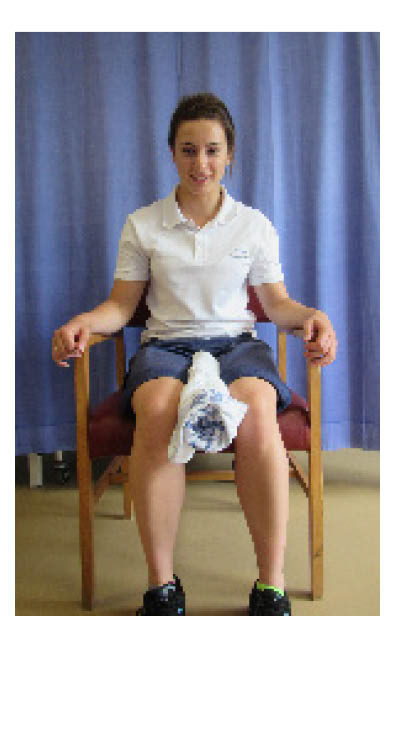
Hip adduction
Place a rolled-up towel between your knees.
Squeeze the towel with your thighs. Hold for 5 seconds.
Repeat ___ times.
Complete ___ times per day.
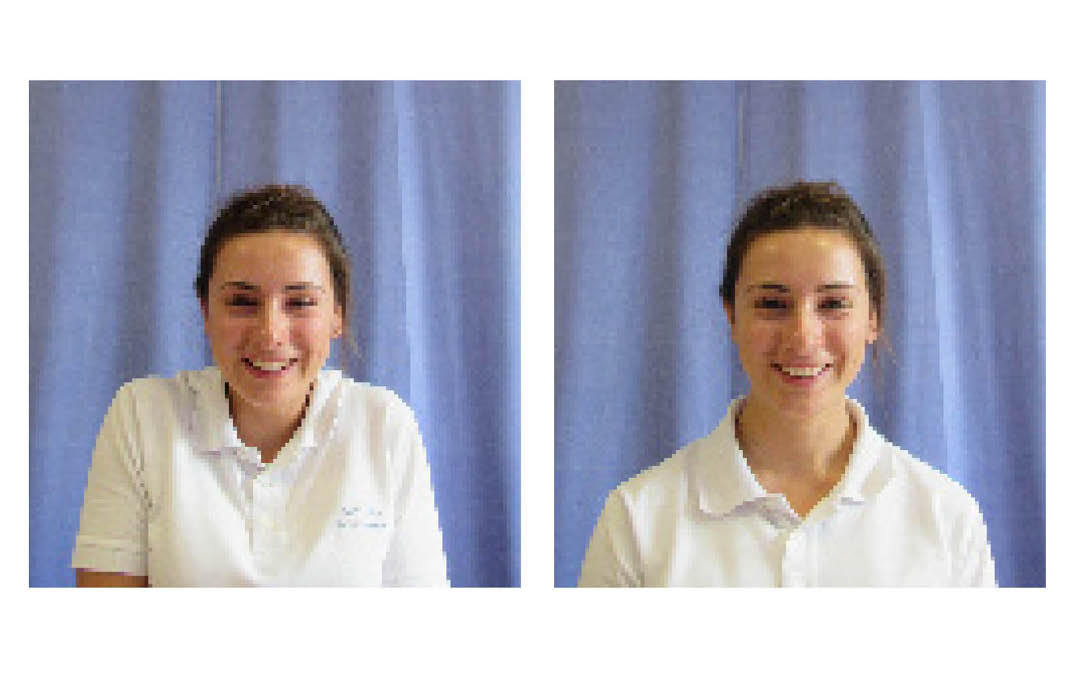
Shoulder shrugs
Slowly lift your shoulders up. Hold for five seconds.
Slowly lower.
Repeat ___ times.
Complete ___ times per day.
Punching
Clench your fists and punch the ceiling. Alternate between your right and left arms.
To make this exercise harder, hold a weight or a safe object of choice.
Repeat ___ times.
Complete ___ times per day.
-
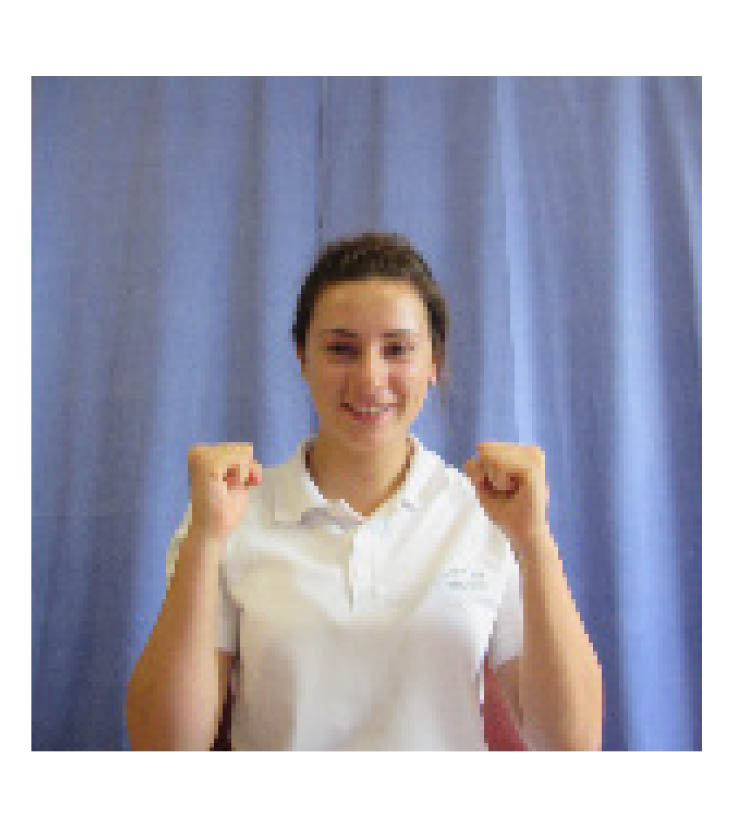 Punching exercise (1)
Punching exercise (1) -
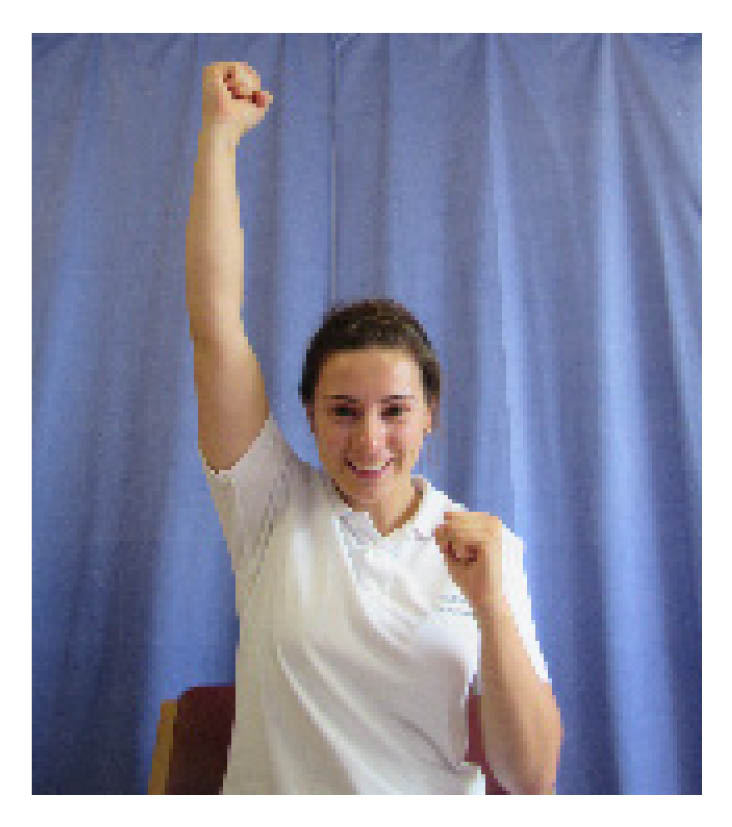 Punching exercise (2)
Punching exercise (2) -
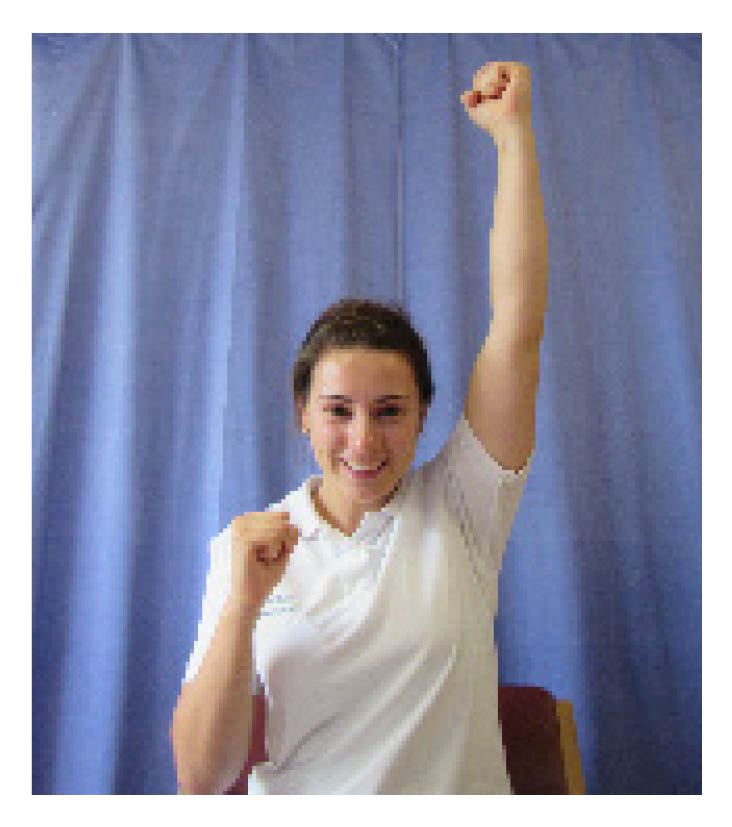 Punching exercise (3)
Punching exercise (3)
Bicep curls
Keeping your elbow tucked into your side.
Bend your elbow, bringing your hand up towards your shoulder.
Slowly straighten your elbow.
Repeat ___ times with both arms.
Complete ___ times per day.
-
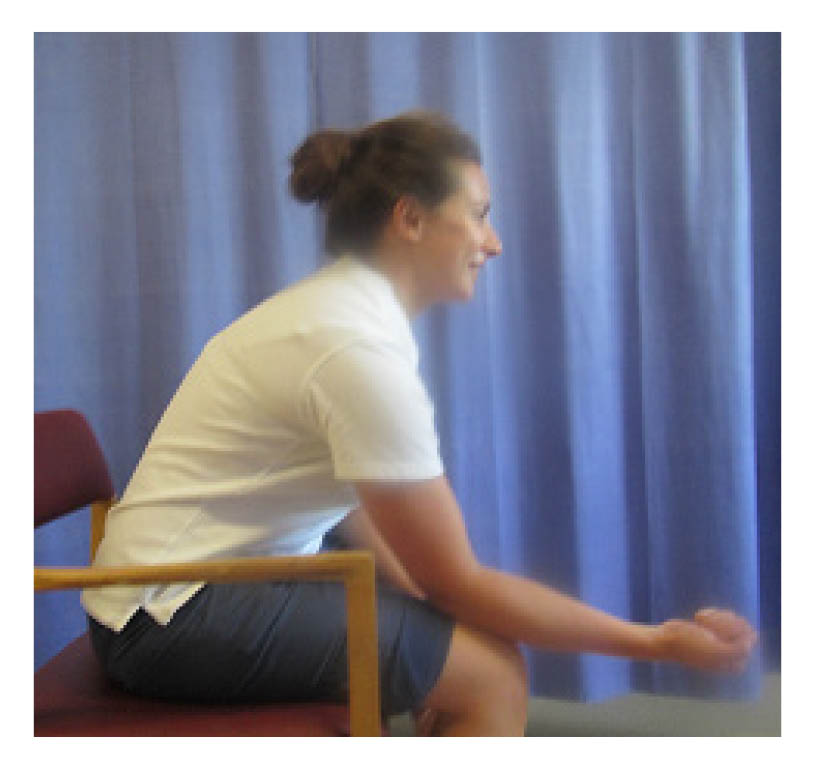 Bicep curls exercise (1)
Bicep curls exercise (1) -
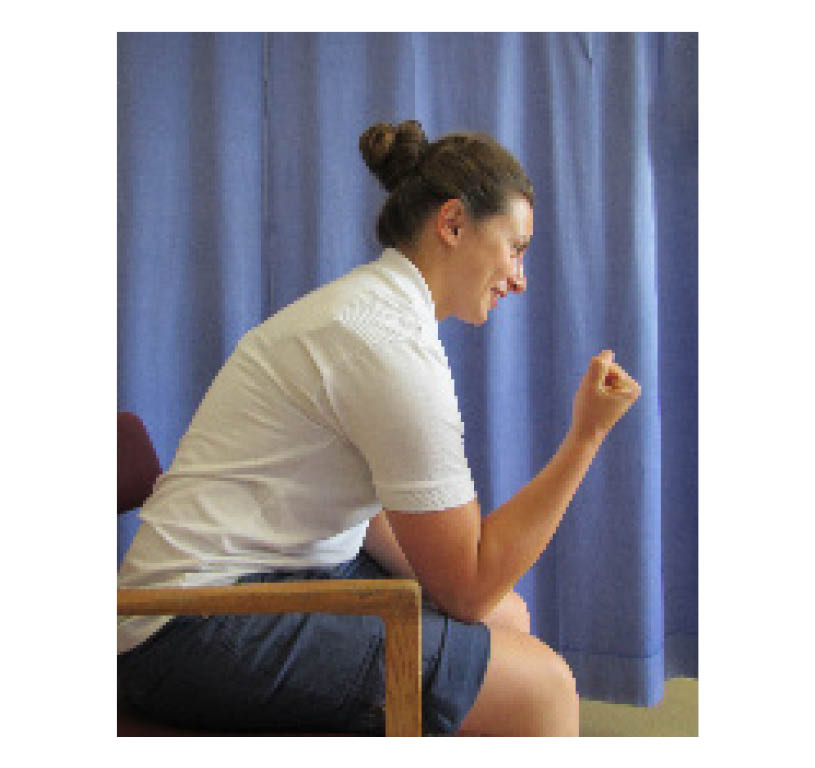 Bicep curls exercise (2)
Bicep curls exercise (2)
Shoulder abduction
Slowly lift your arm out to the side, and up above your head.
Slowly lower.
Repeat ___ times with both arms.
Complete ___ times per day.
-
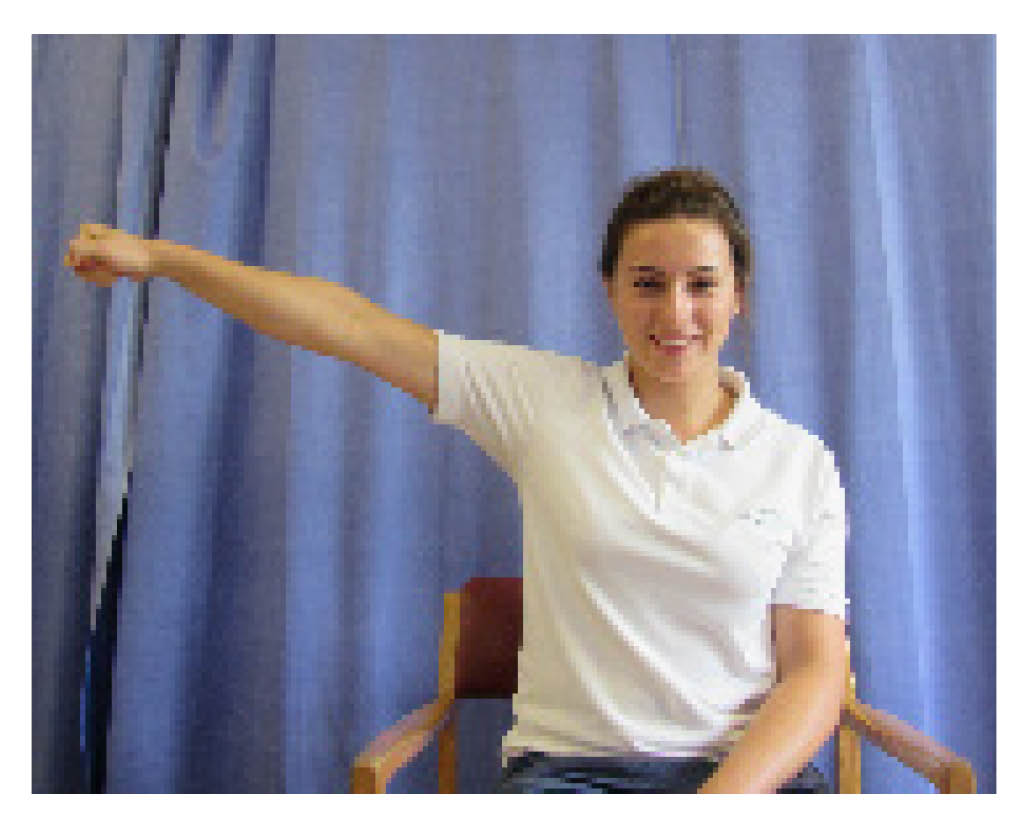 Shoulder abduction exercise (1)
Shoulder abduction exercise (1) -
 Shoulder abduction exercise (2)
Shoulder abduction exercise (2)
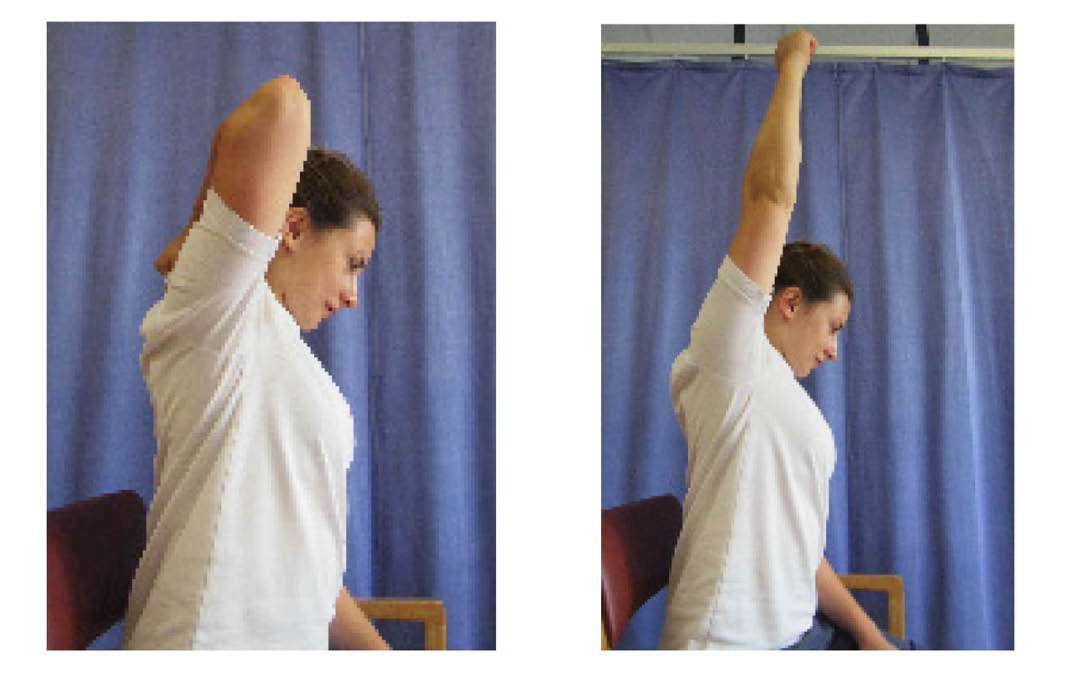
Tricep extension
Bring the arm to be exercised up, with the bent elbow pointing to the ceiling.
Slowly straighten your elbow.
To make this exercise more challenging, hold a weight.
Repeat ___ times.
Complete ___ times per day.
Thumb movements
Touch your thumb to each fingertip in turn.
Repeat ___ times.
Complete ___ times per day.
-
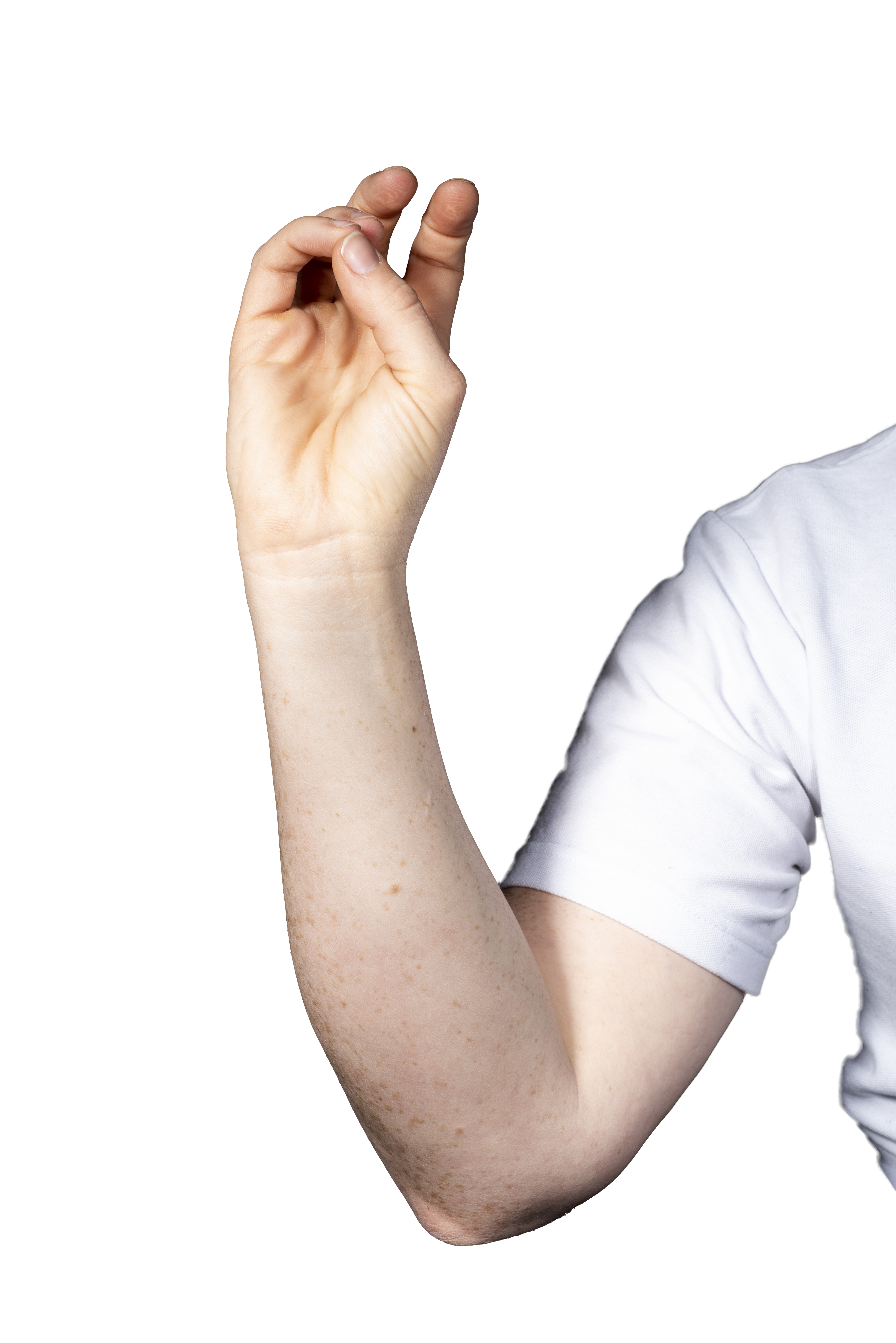 Thumb movements exercise (1)
Thumb movements exercise (1) -
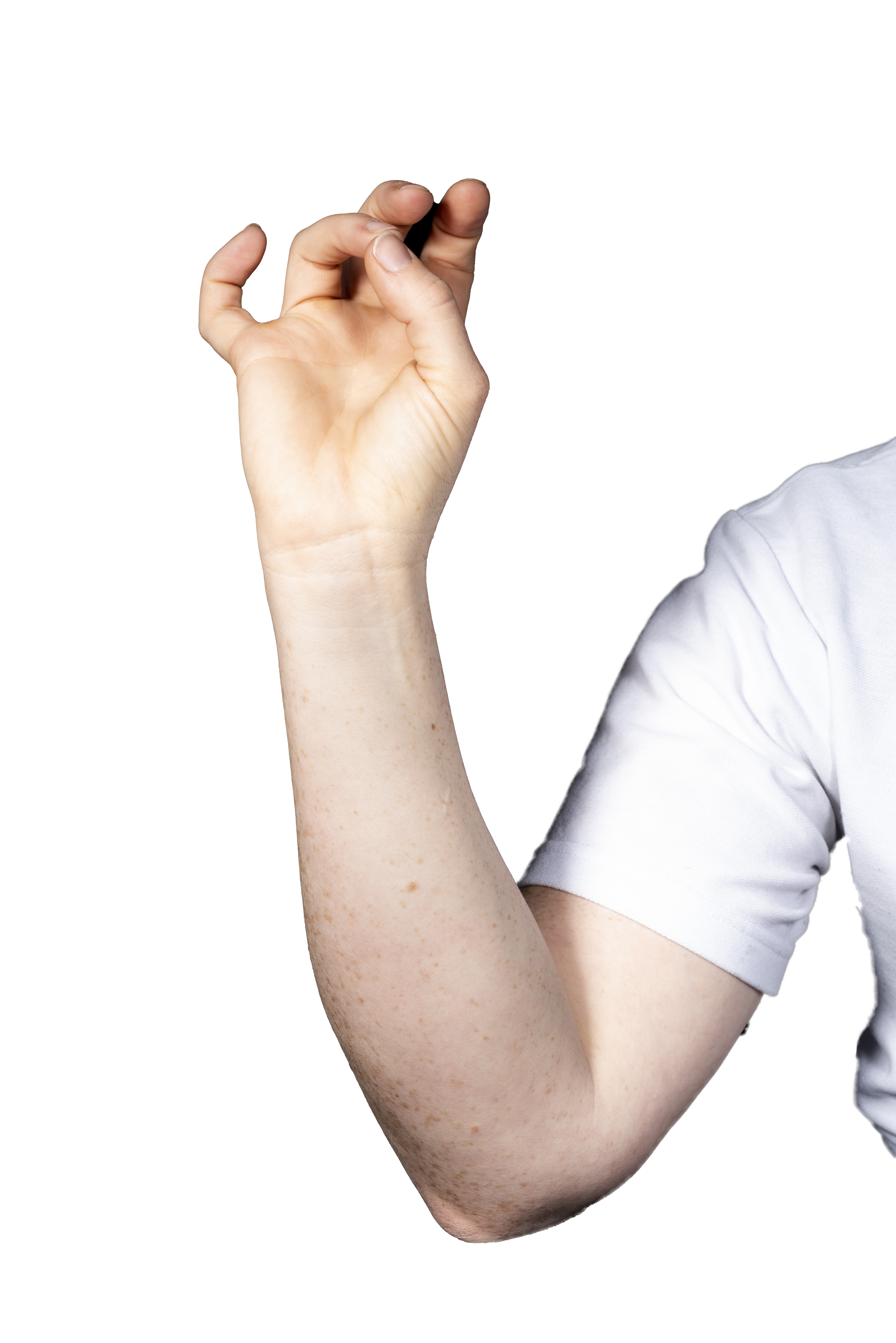 Thumb movements exercise (2)
Thumb movements exercise (2) -
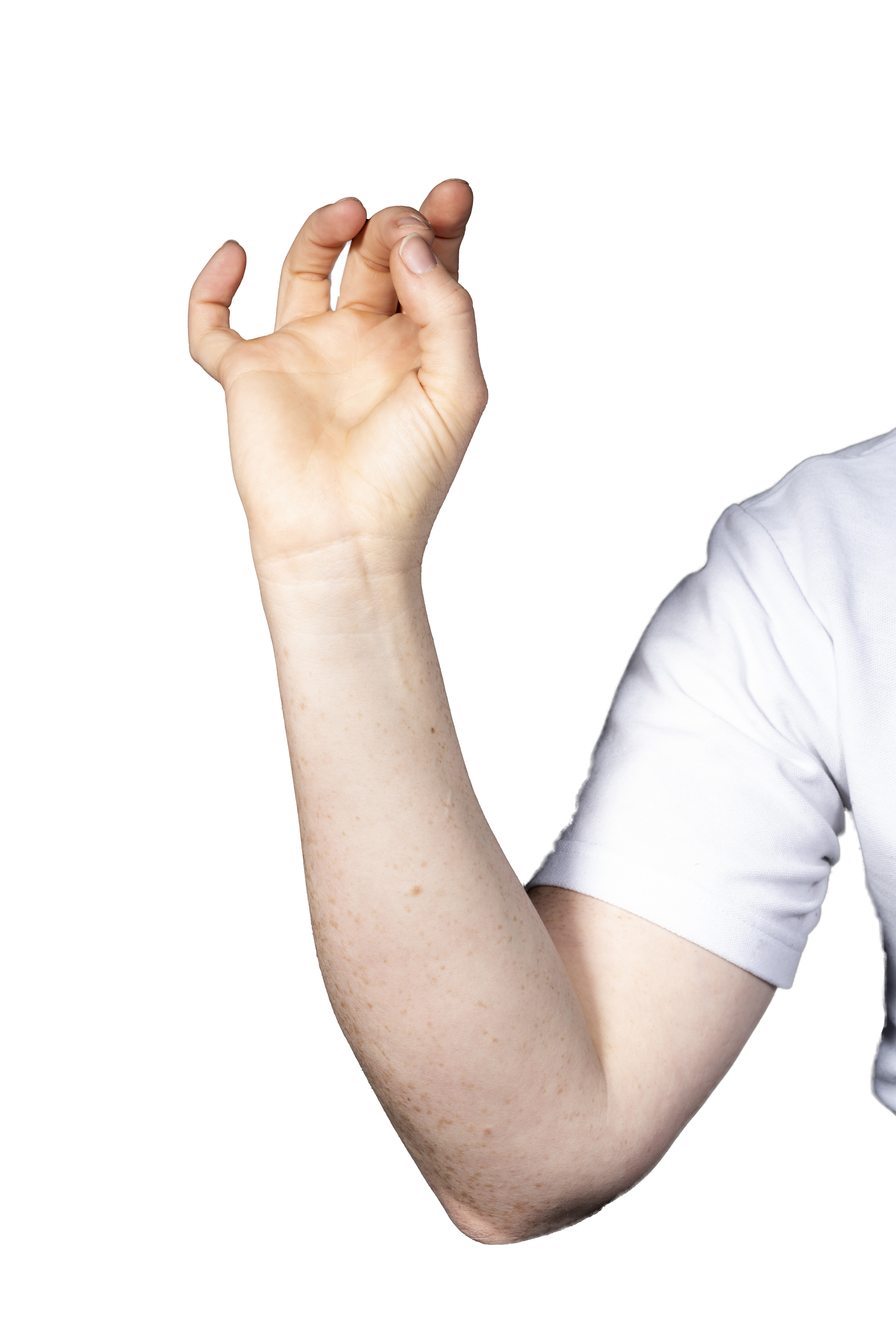 Thumb movements exercise (3)
Thumb movements exercise (3) -
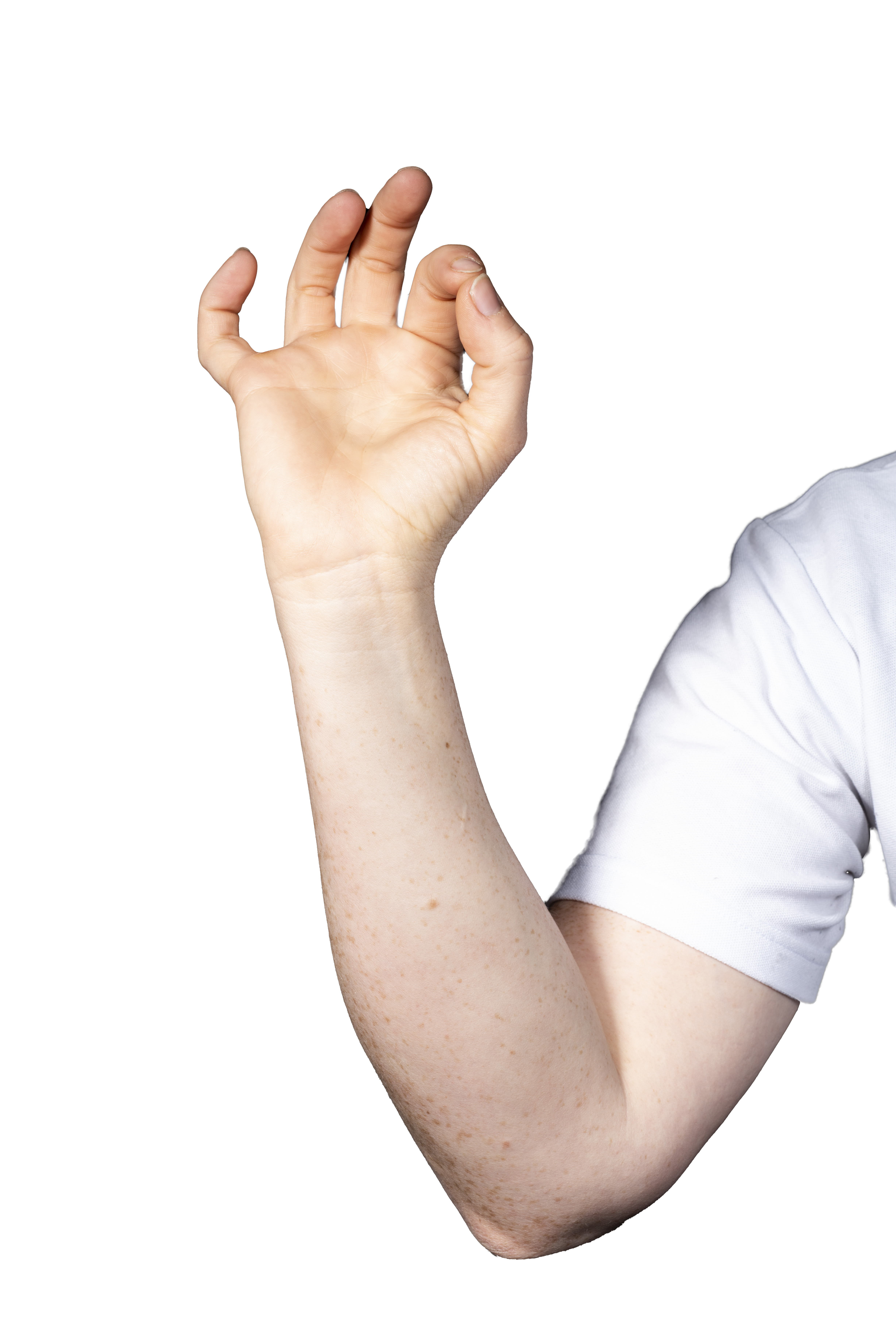 Thumb movements exercise (4)
Thumb movements exercise (4)
Grip
Hold a rolled-up towel with both hands and squeeze.
Hold the squeeze for 5 seconds.
Repeat ___ times.
Complete ___ times per day.
Standing exercises
Sit-stand
Sit in a chair. Use the arms of the chair to push up and slowly stand.
Using the arms of the chair, slowly sit down.
Repeat ___ times.
Complete ___ times per day.
To make it harder, try not using the arms of the chair to help.
-
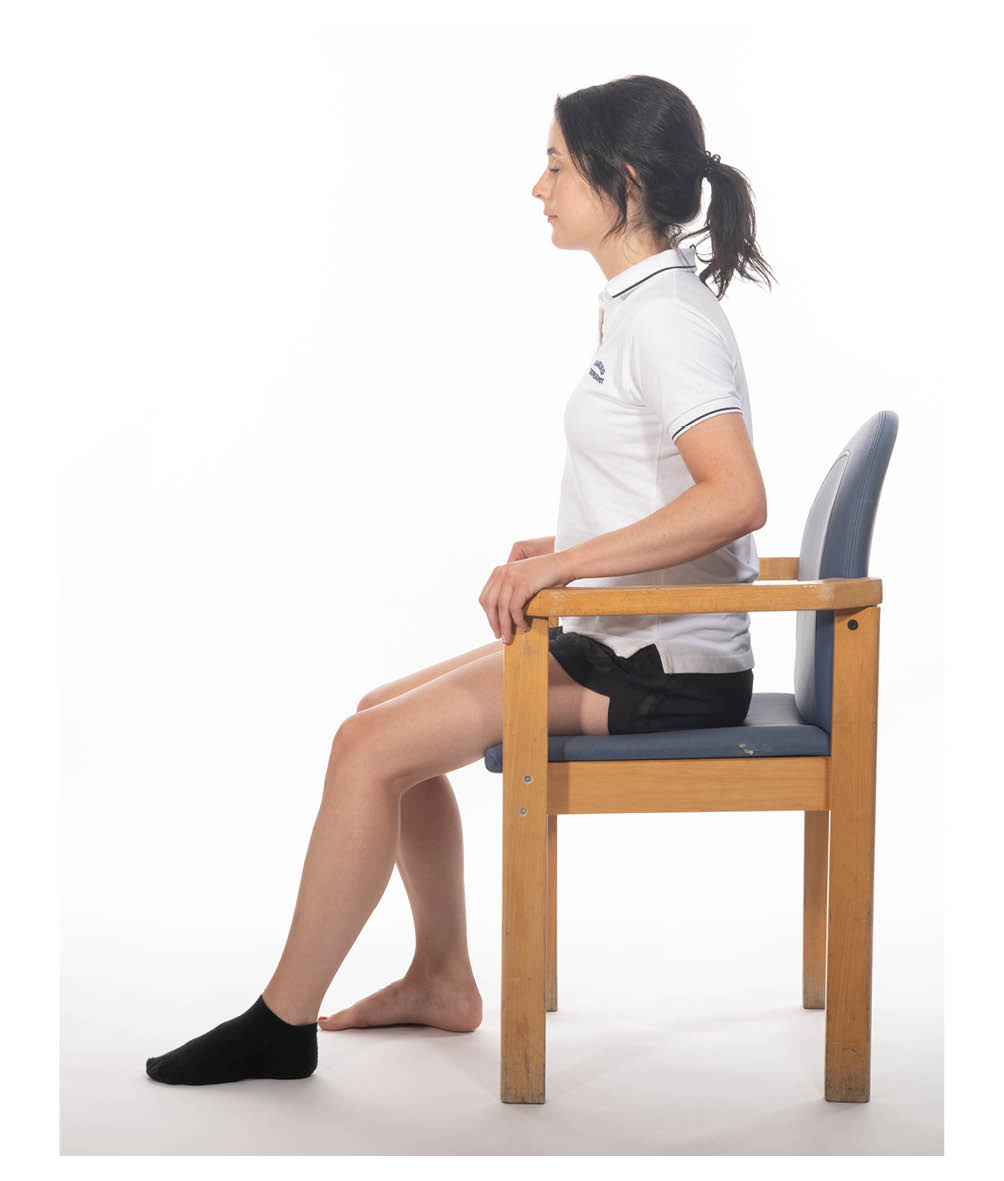 Sit-stand exercise (1)
Sit-stand exercise (1) -
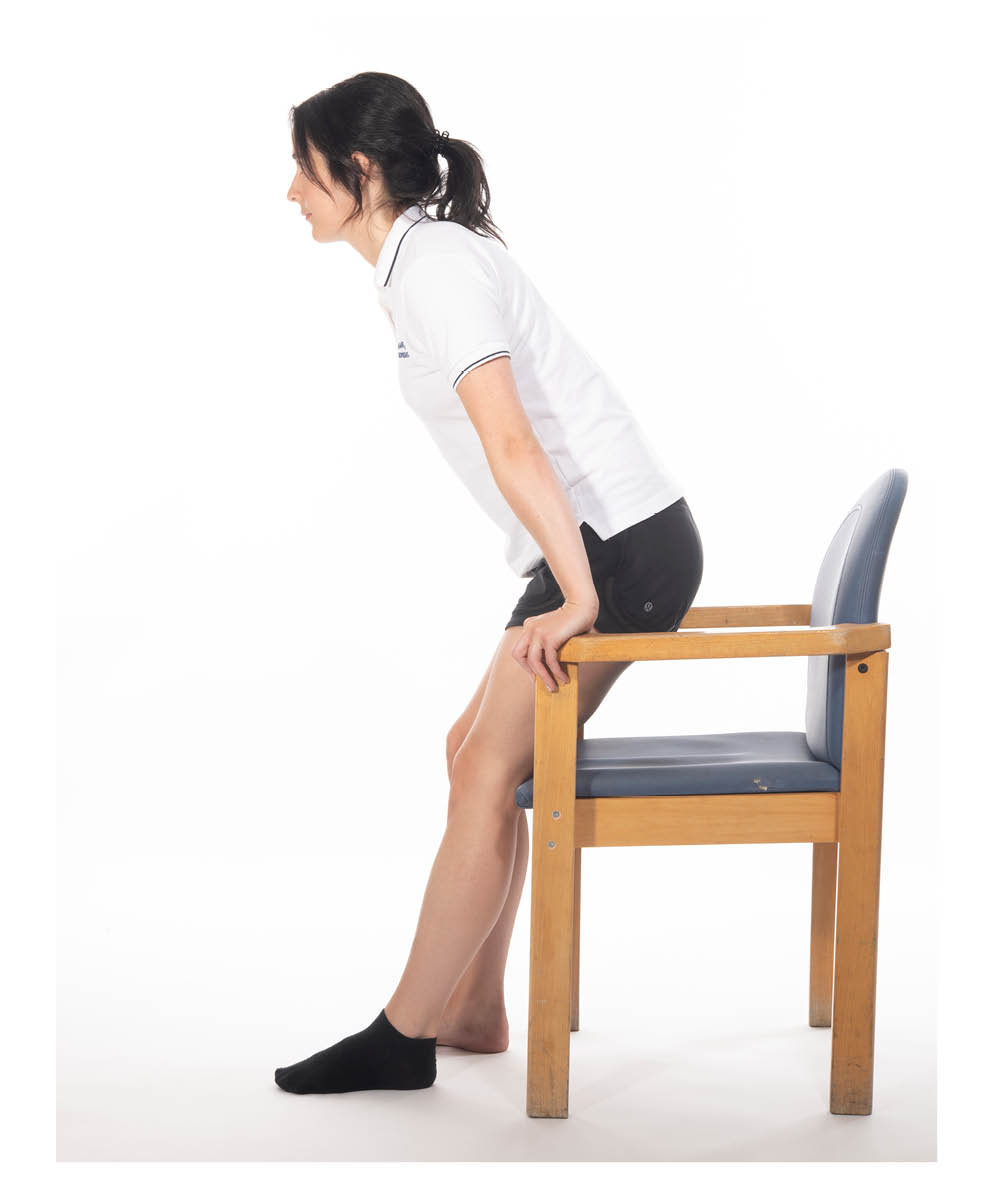 Sit-stand exercise (2)
Sit-stand exercise (2)
Heel raises
Hold on to the back of a chair for support.
Slowly lift your heels off the floor, and come up on to your tiptoes.
Hold for 5 seconds. Slowly lower.
Repeat ___ times.
Complete ___ times per day.
-
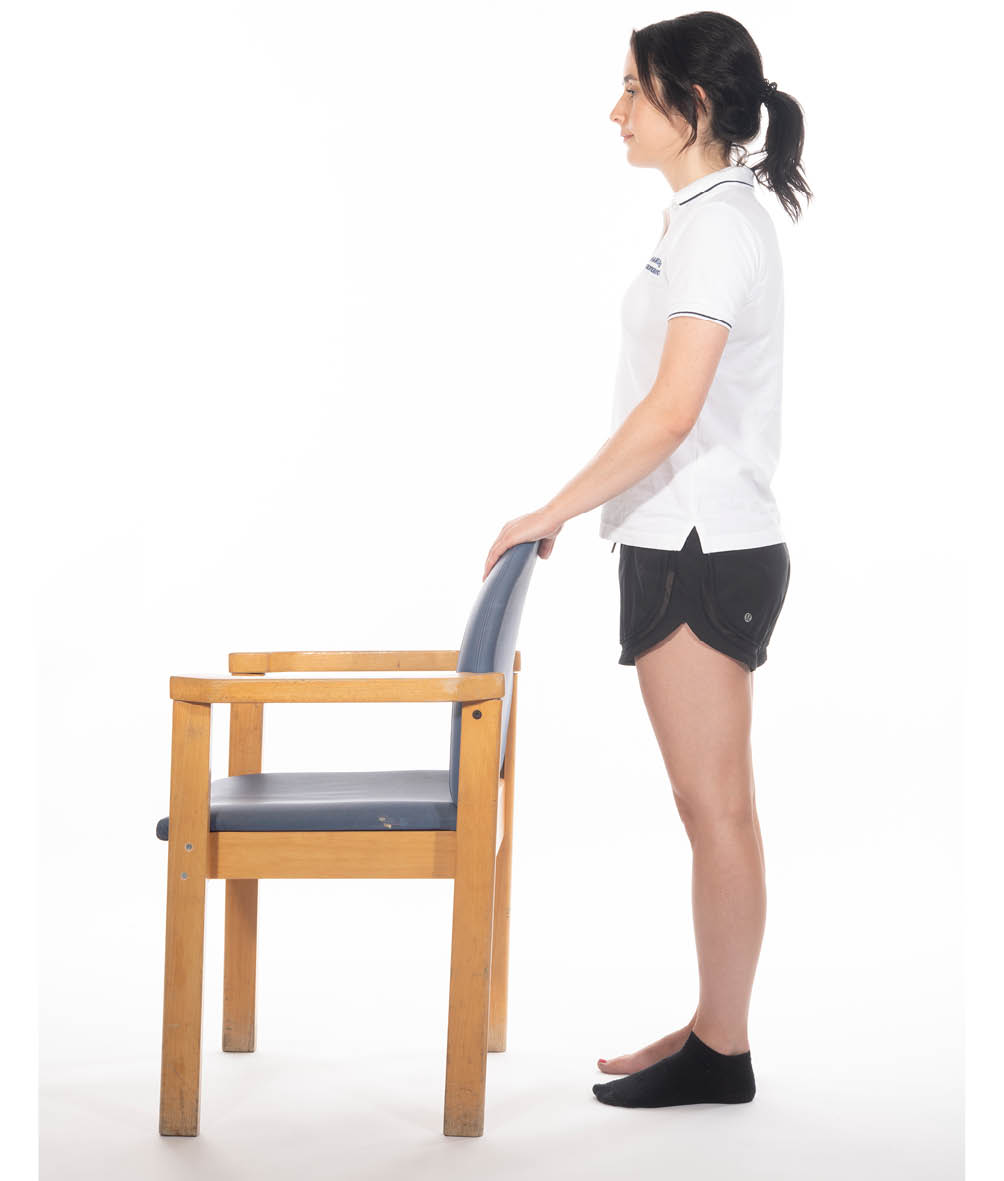 Heel raise exercise (1)
Heel raise exercise (1) -
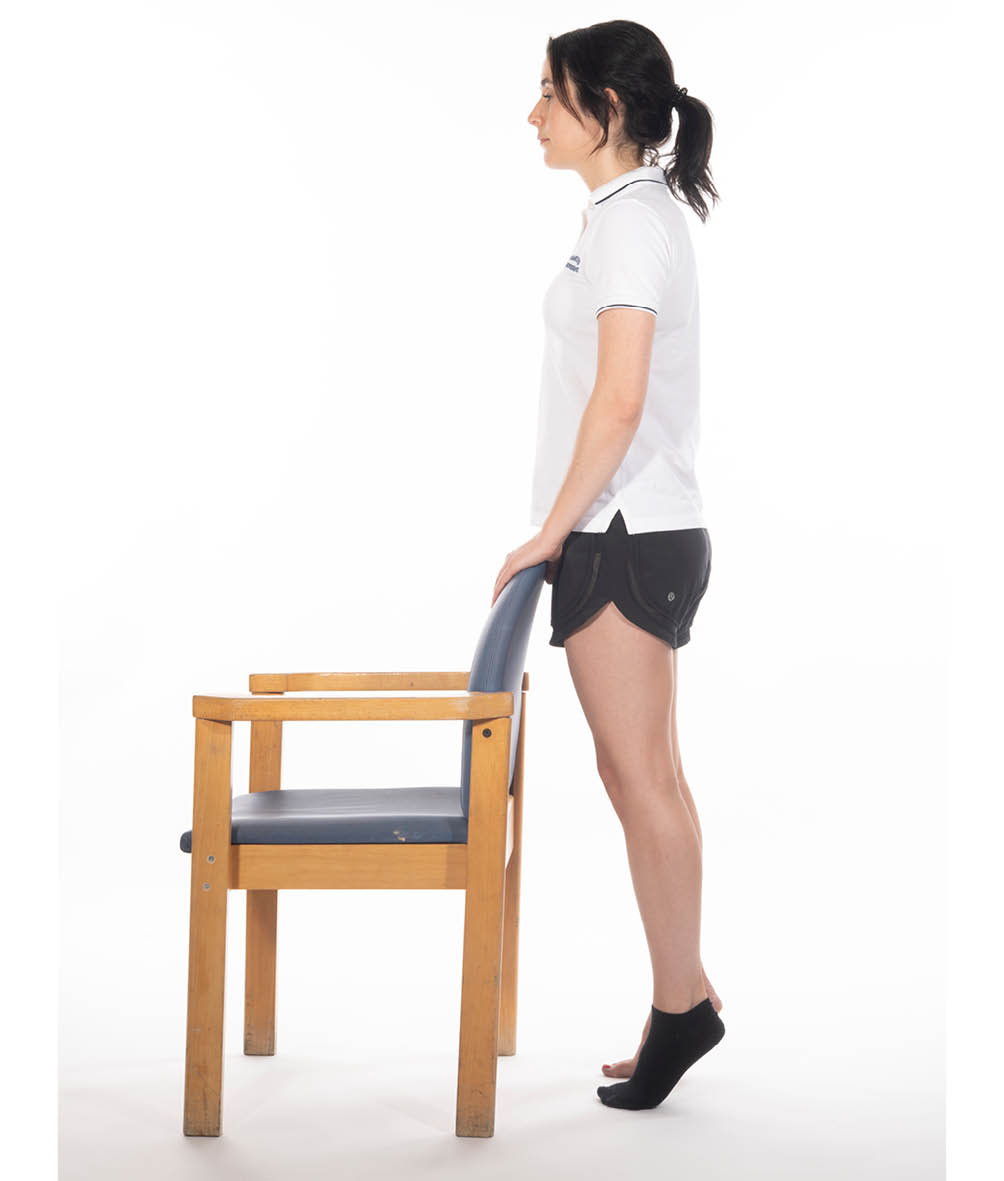 Heel raise exercise (2)
Heel raise exercise (2)
Squats
Hold on to the back of a chair for support.
Slowly bend your knees, as if you were to sit down.
Hold for 5 seconds. Slowly stand up tall.
Repeat ___ times.
Complete ___ times per day.
-
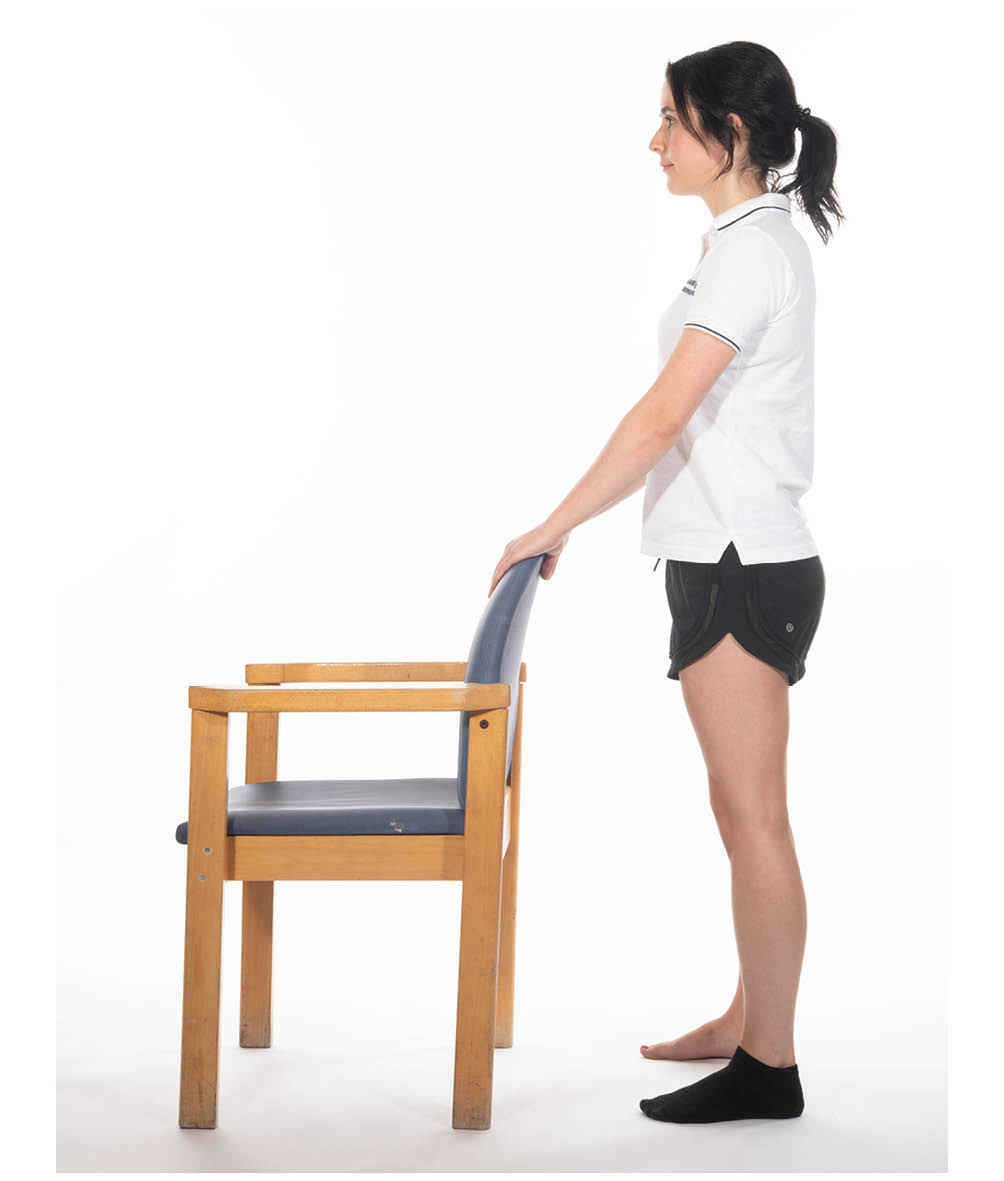 Squats exercise (1)
Squats exercise (1) -
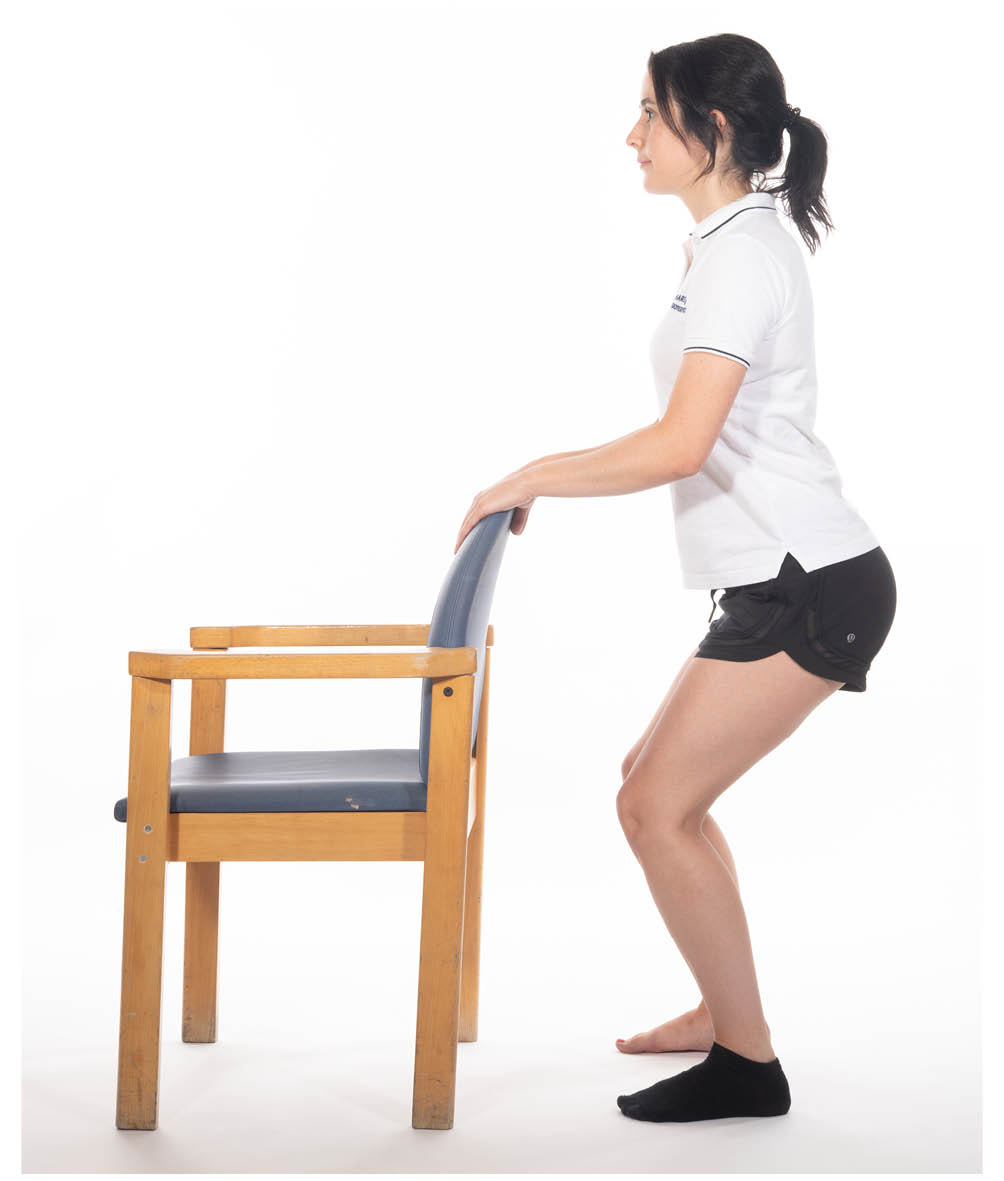 Squats exercise (2)
Squats exercise (2)
Hip flexion
Hold on to the back of a chair for support.
Slowly lift one knee, bringing your foot up off the floor.
Hold for 5 seconds. Slowly lower your foot to the floor.
Repeat ___ times with both legs.
Complete ___ times per day.
-
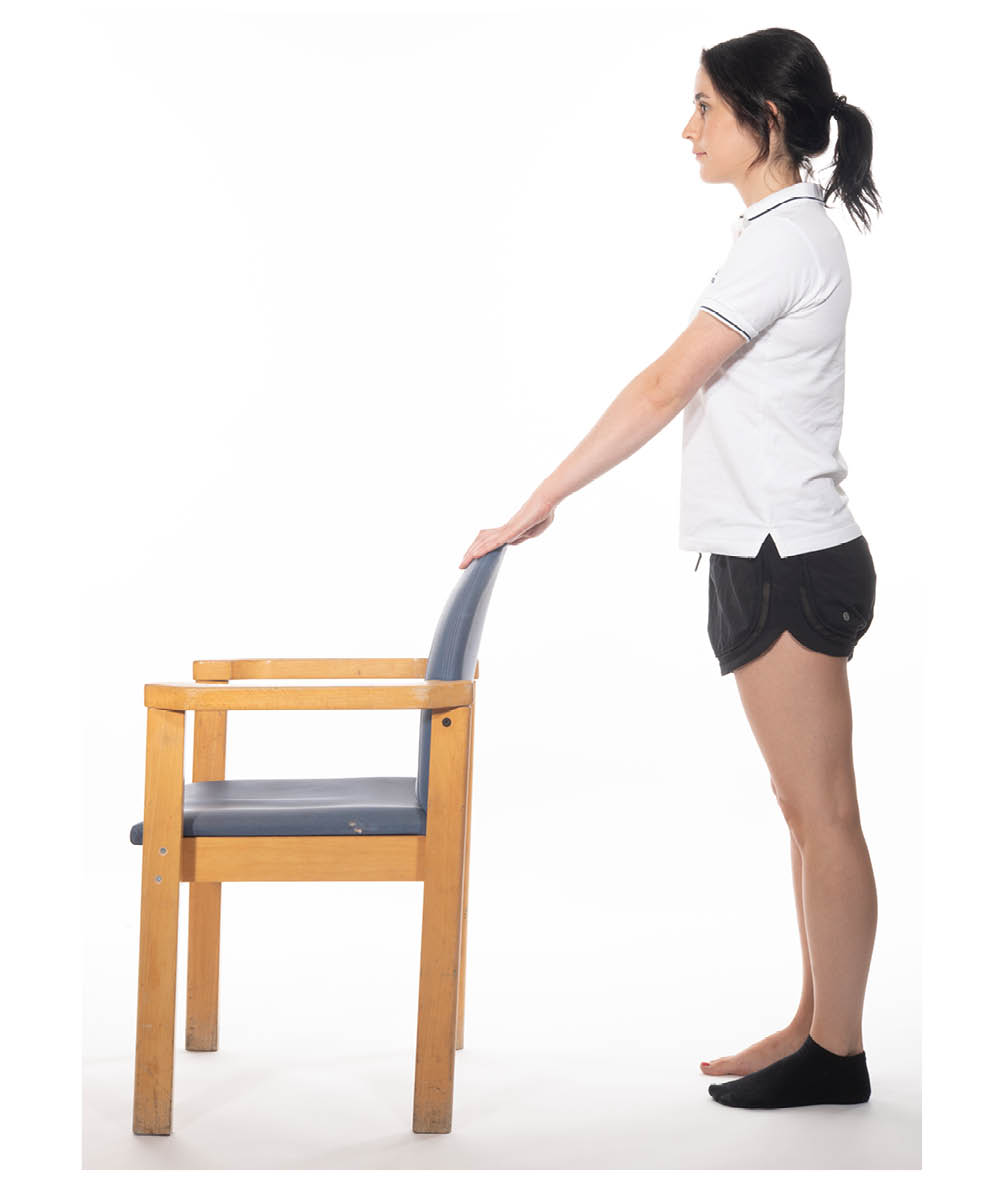 Hip flexion exercise while standing (1)
Hip flexion exercise while standing (1) -
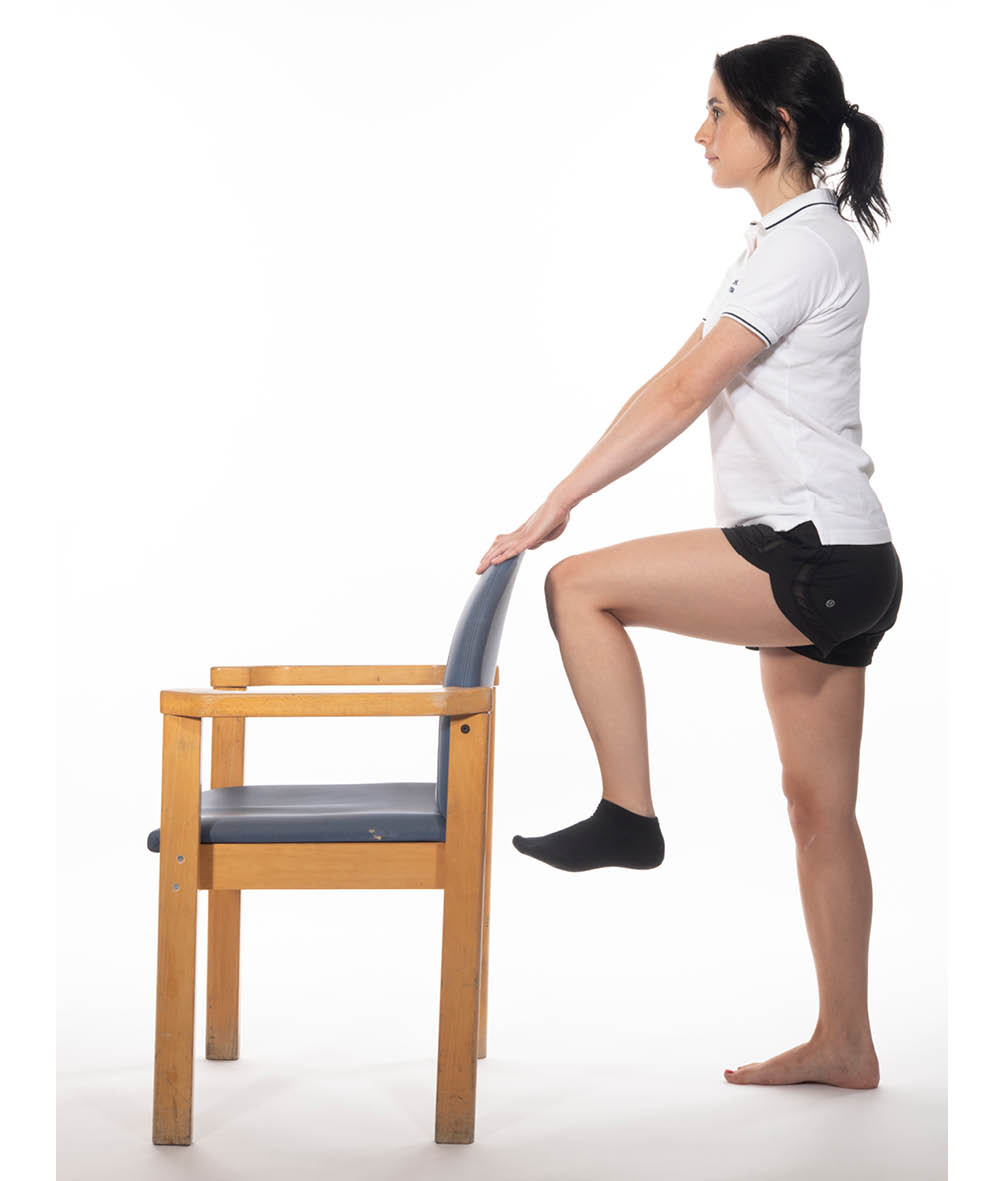 Hip flexion exercise while standing (2)
Hip flexion exercise while standing (2)
Hip extension
Hold on to the back of a chair for support.
Squeeze your bottom muscles, and slowly lift one leg behind you. Keep your toes up towards your shin. Remain standing upright.
Hold for 5 seconds. Slowly lower your foot back down to the floor.
Repeat ___ times with both legs.
Complete ___ times per day.
-
 Hip extension exercise while standing (1)
Hip extension exercise while standing (1) -
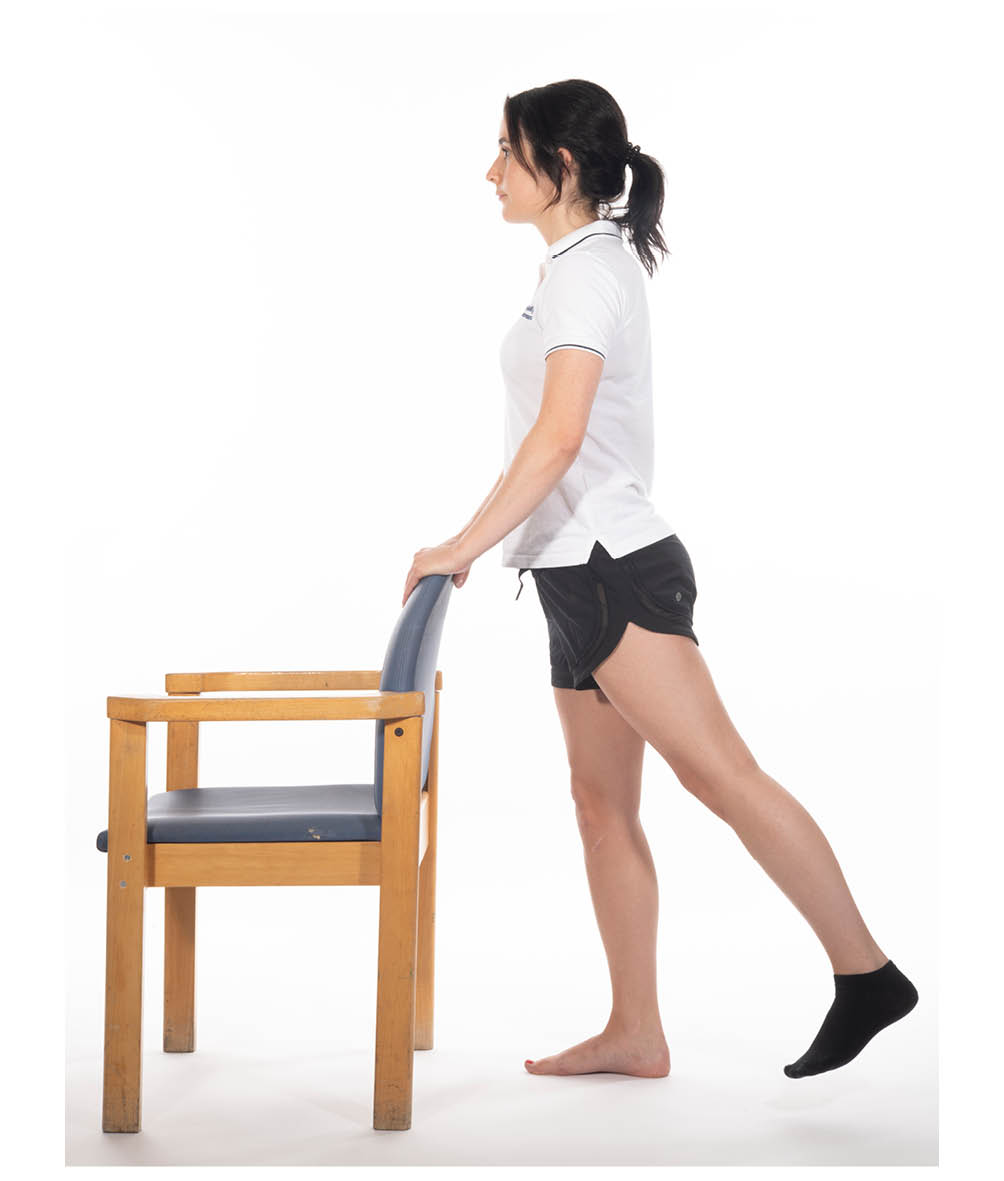 Hip extension exercise while standing (2)
Hip extension exercise while standing (2)
Hip abduction
Hold on to the back of a chair for support.
Slowly lift one leg out to the side. Keep your toes up towards your shin. Remain standing upright.
Hold for 5 seconds. Slowly lower your foot back down to the floor.
Repeat ___ times with both legs.
Complete ___ times per day.
-
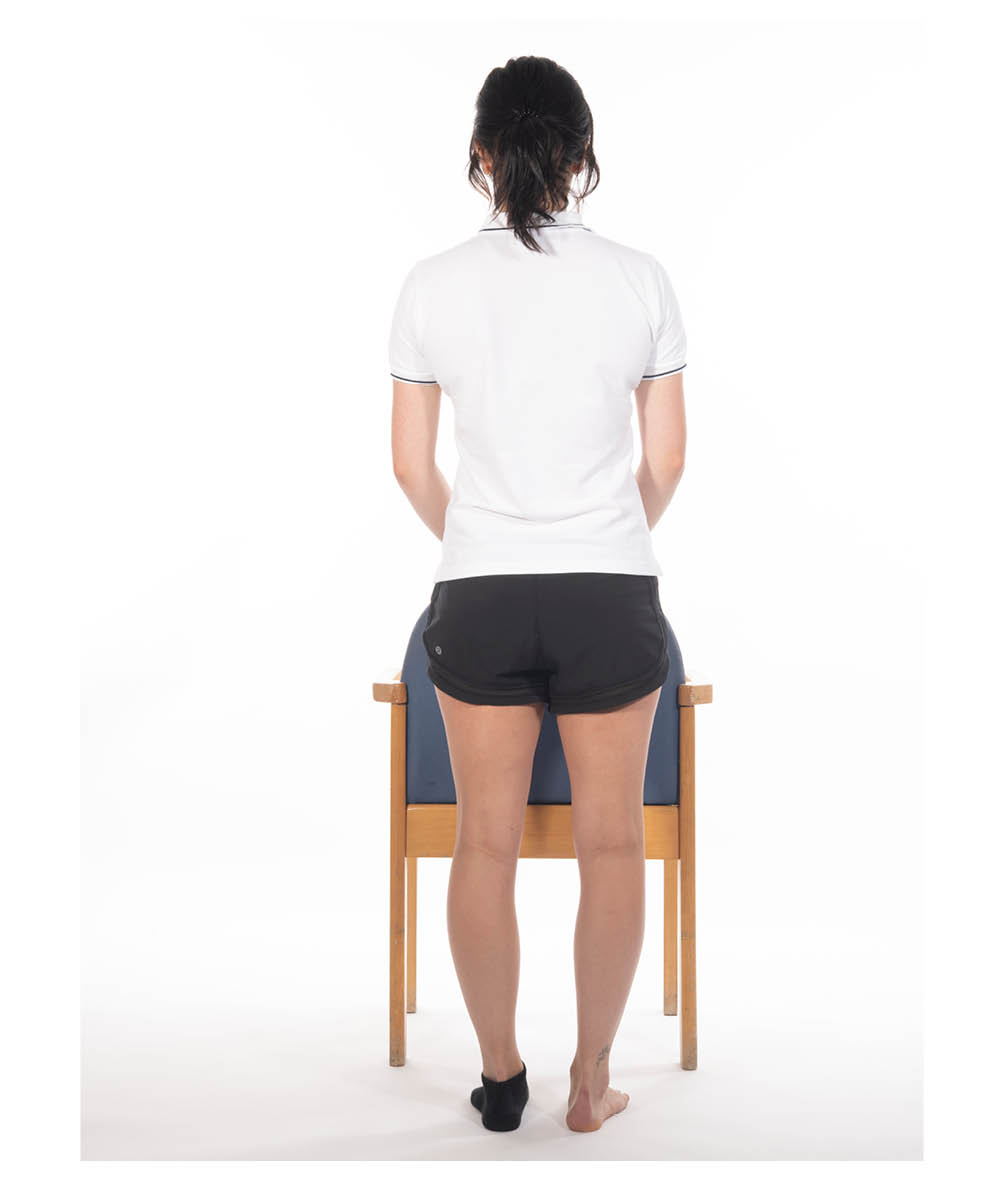 Hip abduction exercise while standing (1)
Hip abduction exercise while standing (1) -
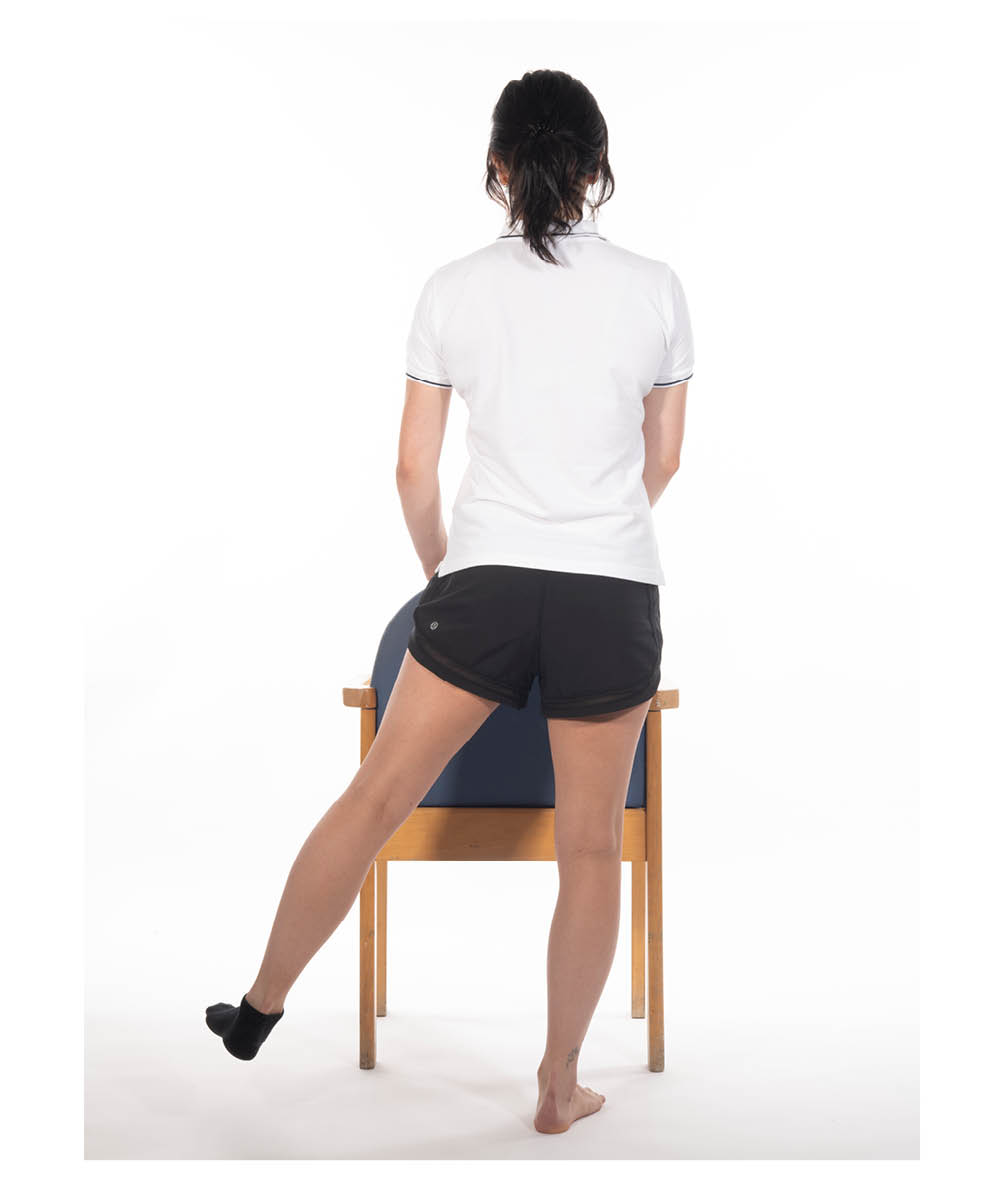 Hip abduction exercise while standing (2)
Hip abduction exercise while standing (2)
Balance exercise (1)
Stand close to something stable to hold on to. Place your feet together.
Stand like this for 1 minute.
Complete ___ times per day.
To make this harder, close your eyes or reduce your hold on the stable surface.
Balance exercise (2)
Stand close to something stable to hold on to. Place one foot in front of the other.
Hold for 1 minute.
Complete ___ times per day.
To make this harder, close your eyes or reduce your hold on the stable surface.
What if I have further concerns or questions?
For any help and advice do not hesitate to contact the Critical Care Unit on one of the numbers below.
Critical Care Unit, Kent and Canterbury Hospital, Canterbury
Telephone: 01227 783104Critical Care Unit, Queen Elizabeth the Queen Mother (QEQM) Hospital, Margate
Telephone: 01843 234415Critical Care Unit, William Harvey Hospital, Ashford
Telephone: 01233 616114Critical Care Outreach Follow-Up and Rehabilitation Sister
Mobile: 07771 378331
Email
References
What do you think of this leaflet?
We welcome feedback, whether positive or negative, as it helps us to improve our care and services.
If you would like to give us feedback about this leaflet, please fill in our short online survey. Either scan the QR code below, or use the web link. We do not record your personal information, unless you provide contact details and would like to talk to us some more.
If you would rather talk to someone instead of filling in a survey, please call the Patient Voice Team.
Patient Voice Team
Telephone: 01227 868605
Email